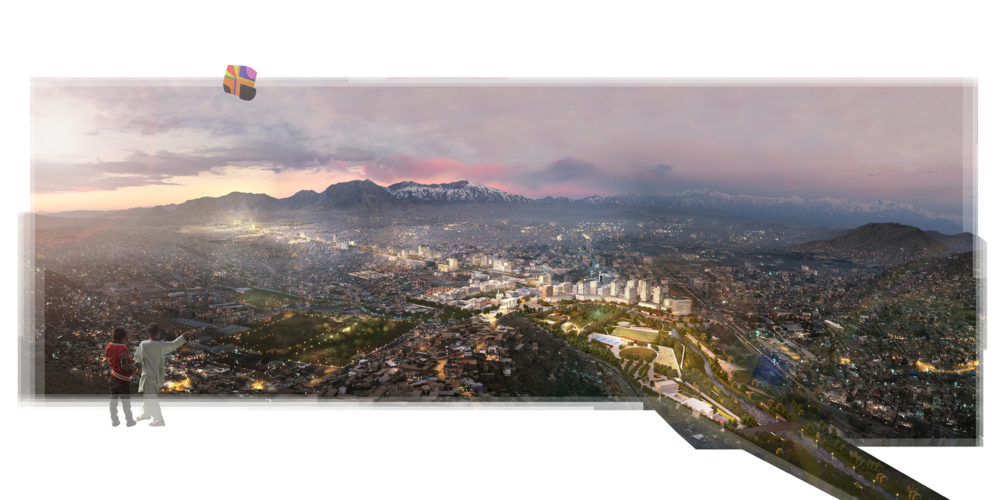
Kabul Urban Design Framework
Kabul, Afghanistan
 Sasaki
Sasaki
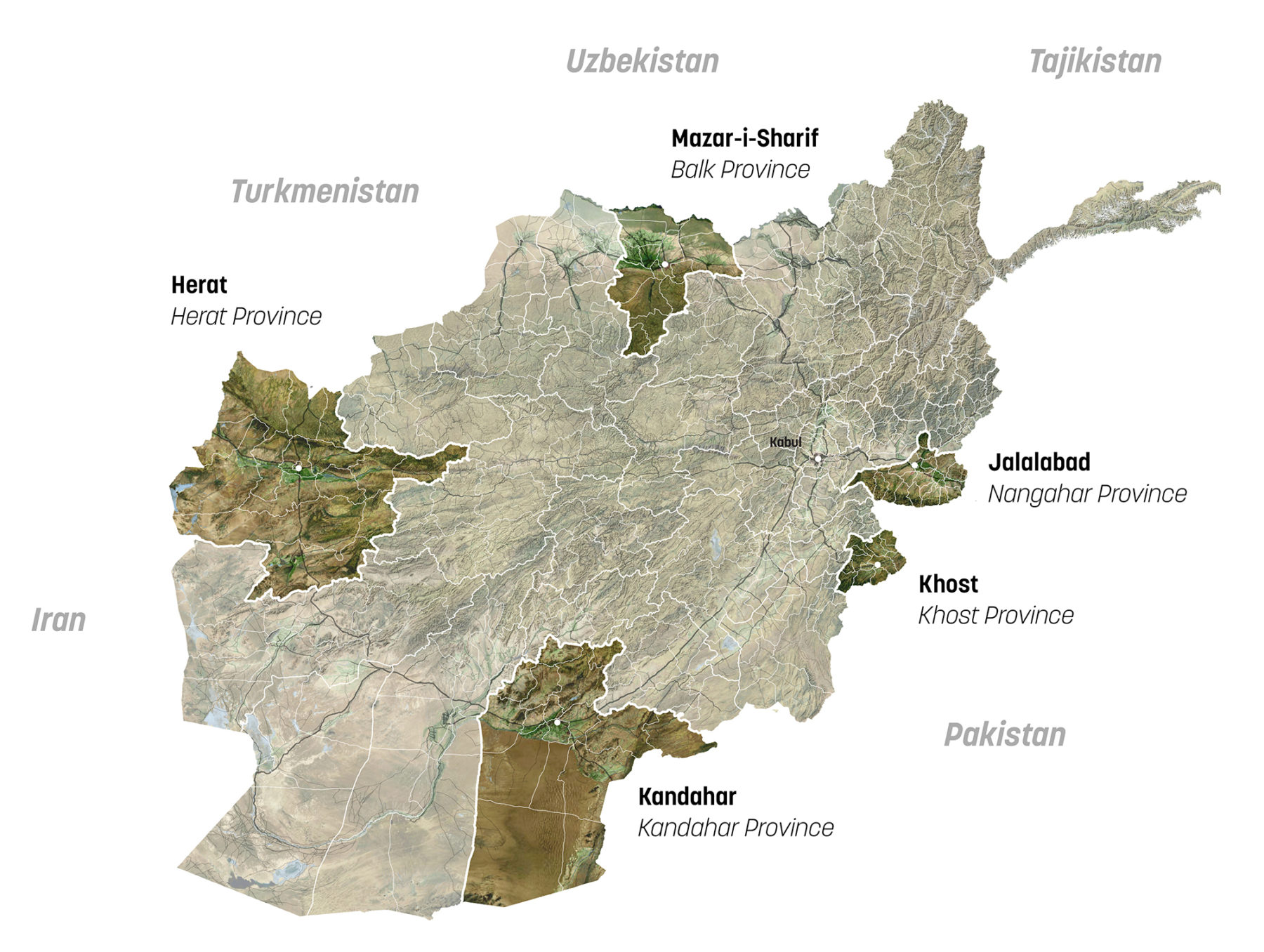
For centuries, Afghan cities were hubs of international commerce and culture. Today, amidst three decades of instability, the country is struggling to leverage economic and cultural assets to create prosperous cities and meet the basic needs of the country’s growing urban population.
Working closely with President Ashraf Ghani and the Ministry of Urban Development and Land, Sasaki worked to develop a bold vision to guide strategic development in five of Afghanistan’s largest cities: Herat, Jalalabad, Kandahar, Khost, and Mazar-e-Sharif. These visions will enable local governments to build towards the future while addressing the immediate challenges that each Afghan city faces: informality and affordable housing, the preservation of cultural heritage, protection of water resources, and the development of resilient infrastructure to mitigate environmental hazards. The Strategic Development Frameworks themselves, as planning and policy documents, articulate a clear vision and establish a roadmap for future investment in each city. Together, they define a cohesive approach to urban planning at the national scale while building management capacity at the local level.
Fragmentation across sectors and a lack of capacity at the local level is a challenge faced by many developing countries. In Afghanistan, the SDFs were intended to support a much larger effort to build the management capacity of individual cities and to unite different ministries around a cohesive overarching vision. At the highest levels of government, Sasaki was fortunate enough to work closely with President Ashraf Ghani and the leadership of the Ministry of Urban Development and Land, the Independent Directorate of Local Governance, the Ministry of Commerce and Industry, the Ministry of Agriculture, Irrigation, and Livelihoods. Each of these leaders emphasized the importance of an inclusive approach that engaged local government and civil society leaders, and reflected the experiences and needs of the most vulnerable Afghans. Sasaki worked closely with a team of local planning and development consultants to develop a comprehensive outreach and engagement process, with an emphasis on women, IDPs, and youth:
A stakeholder workshop was also held in each city with key stakeholders and implementation partners. The first component of each workshop focused on eliciting information about the cities through a SWOT session and the identification of key drivers and critical themes. Stakeholders were then asked to prioritize goals, actions, and potential commitments for implementation. At the conclusion of each workshop, an open house presentation and visioning session was held, to include a larger group of community leaders and civil society stakeholders.
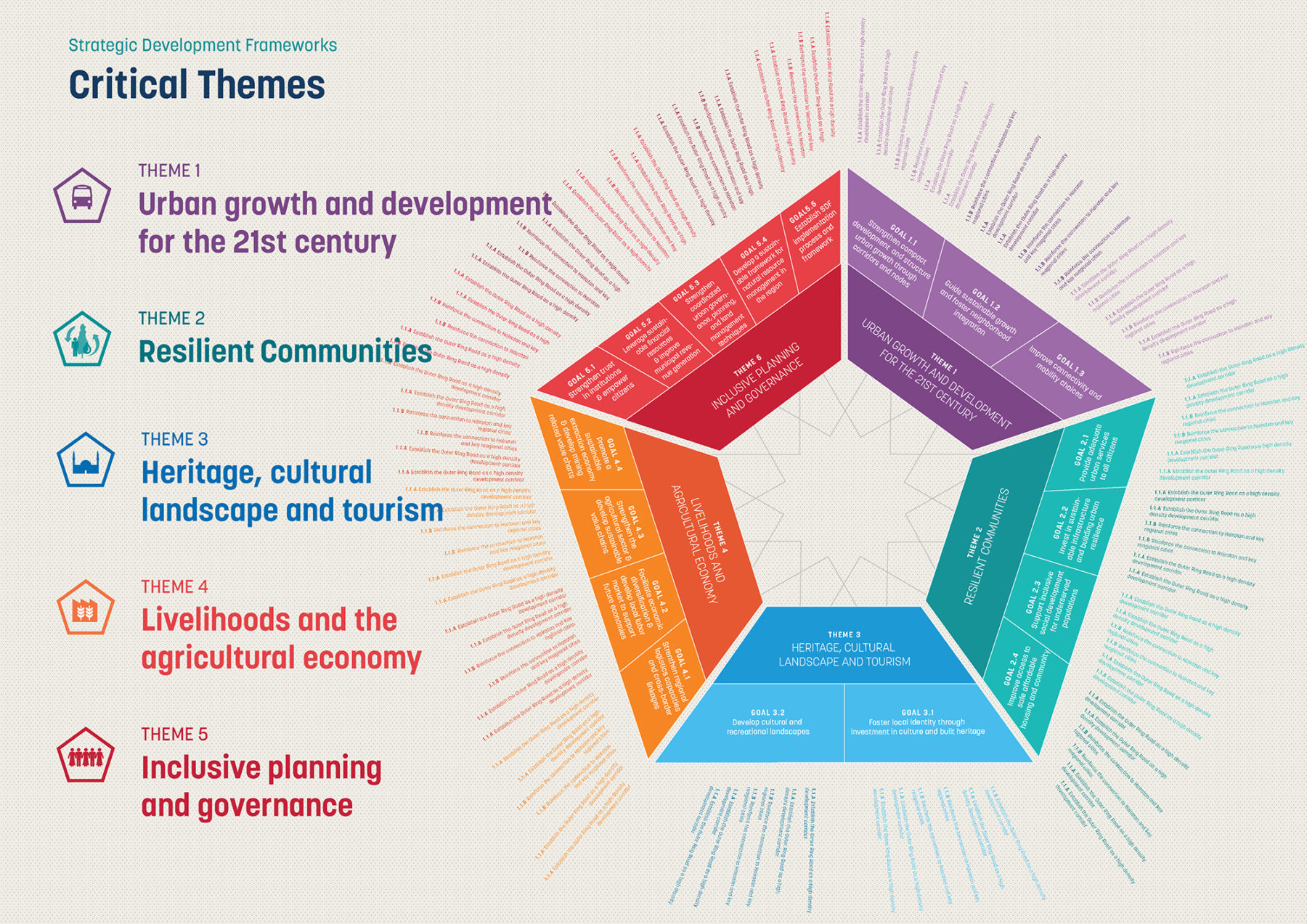
Critical Themes organize strategic development frameworks along key components of a future vision for each city
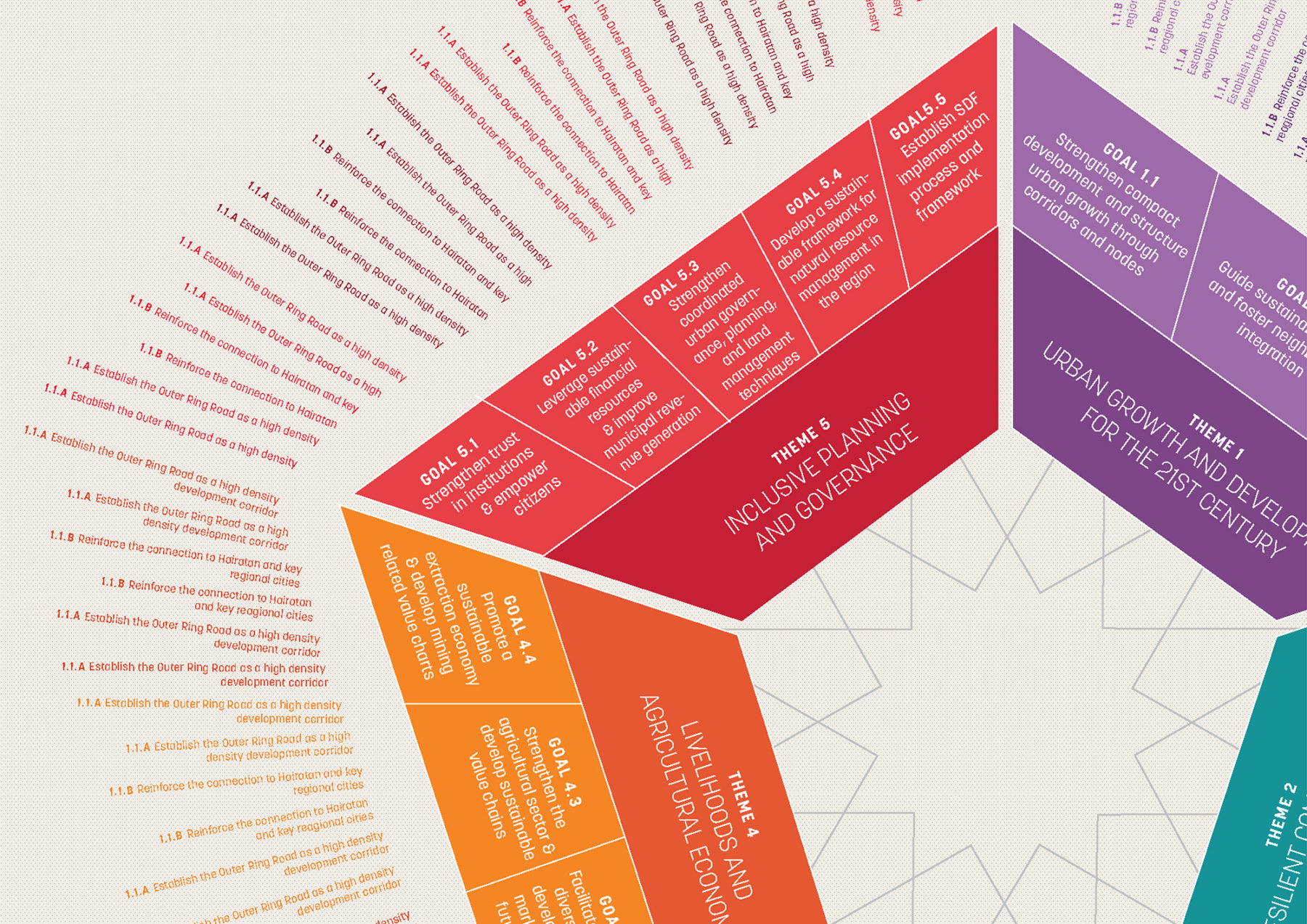
An implementation driven framework ties critical themes to actionable strategic objectives and catalytic projects
Herat, Jalalabad, Kandahar, Khost, and Mazar are political, economic and cultural hubs for their respective regions within Afghanistan. The Strategic Development Frameworks cross scales and sectors; they look beyond municipal boundaries and take into account the complex realities of how each city functions within Afghanistan’s urban-rural continuum. Each SDF was organized into five thematic areas, highlighting the need to for cross-sectoral cooperation while identifying specific actors for implementation.
Theme 1: Urban Growth and Development addressed the rapid population growth experienced by Afghan cities and articulated a sustainable strategy for each city to absorb this new population over the next 20 years
Theme 2: Resilient Communities developed approaches to the most pressing challenges faced by Afghanistan’s cities, from basic infrastructure to women’s rights
Theme 3: Heritage and Cultural Landscapes sought to protect and leverage the considerable natural and built heritage in each city
Theme 4: Livelihoods and the Agricultural Economy identified the competitive advantages of each city, developed strategies to strengthen economic value chains, and envisioned each city as a gateway for international trade and investment.
Theme 5: Inclusive Planning and Governance focused on policies and initiatives to strengthen institutional capacity at the local and national levels
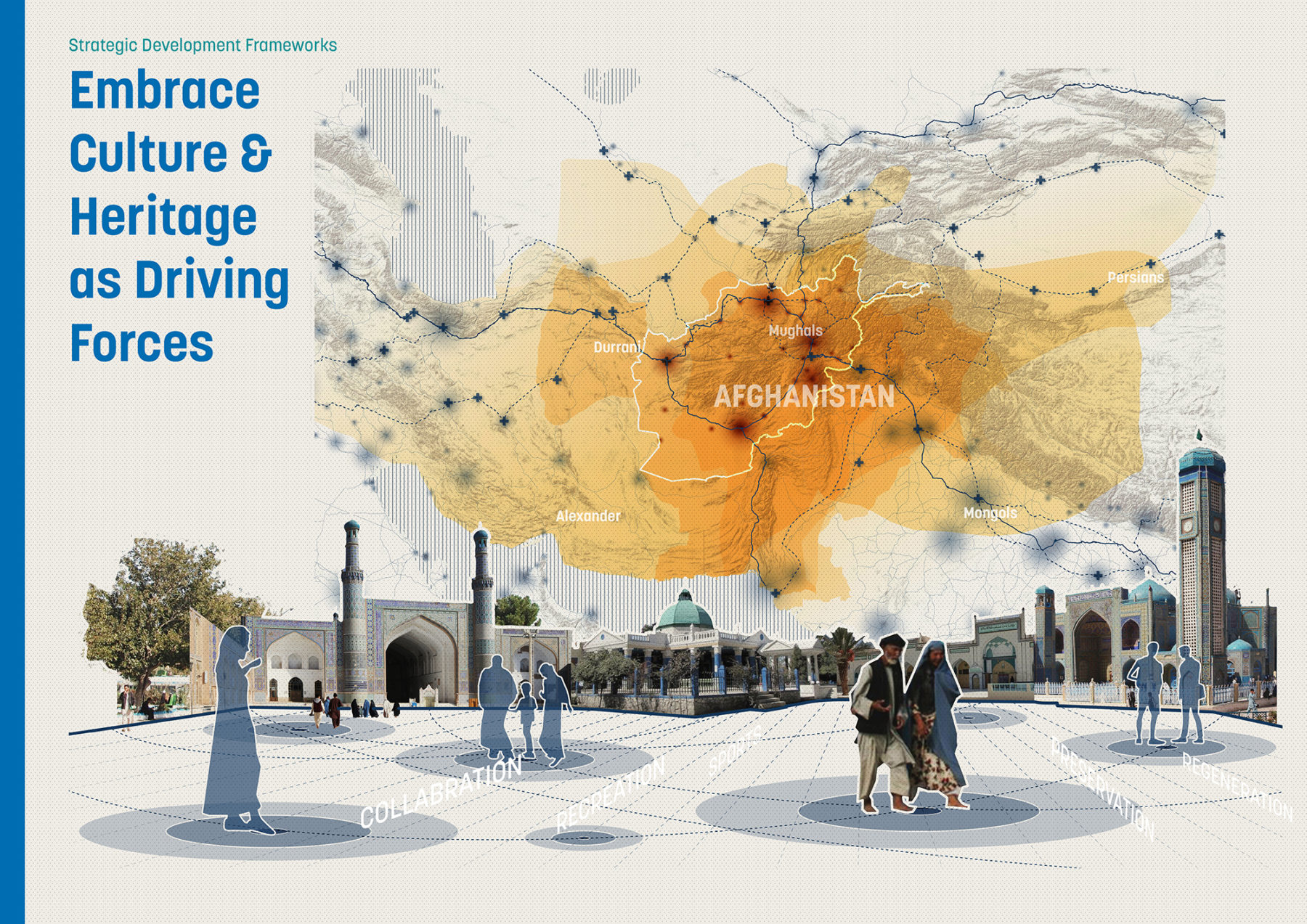
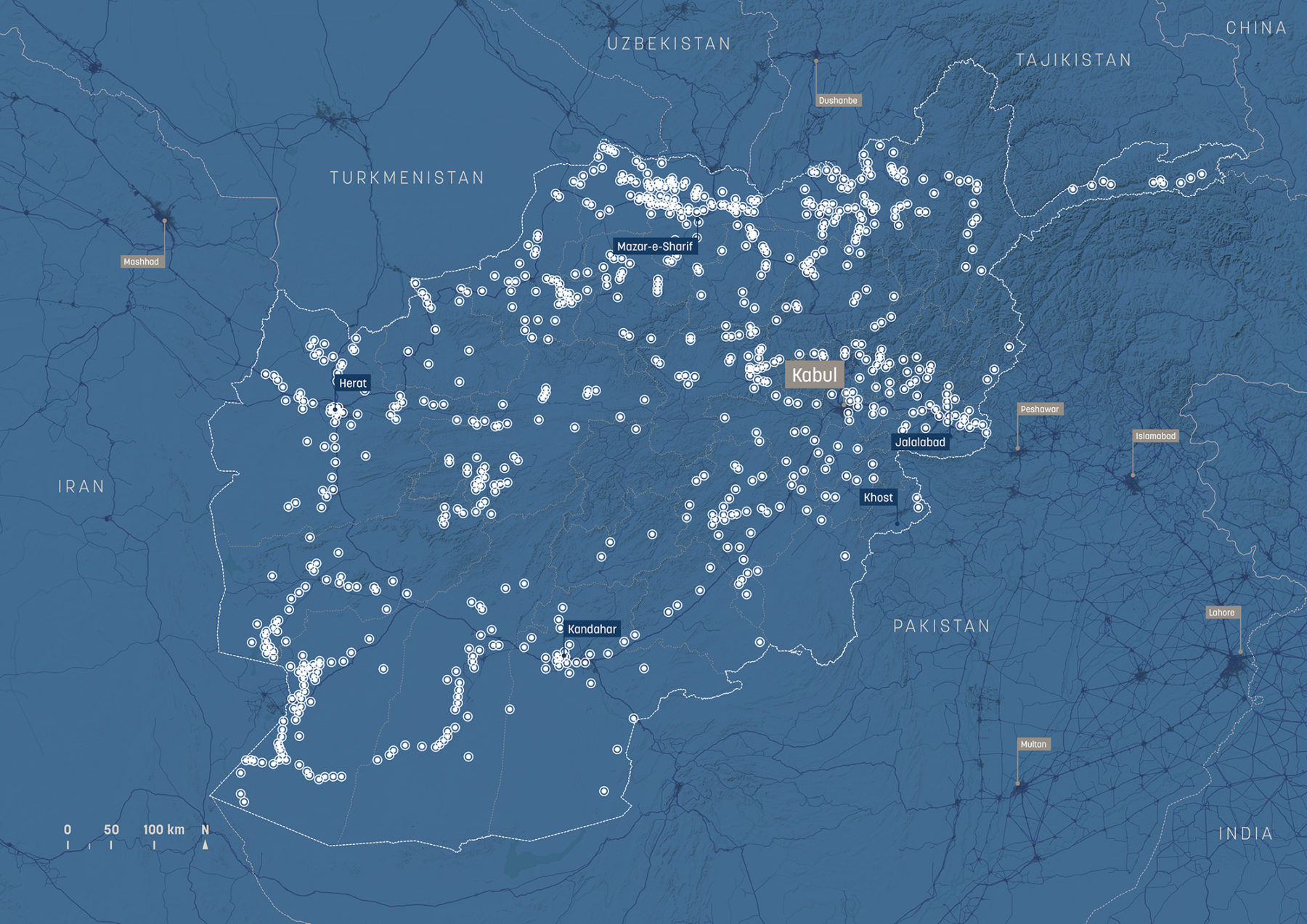
Rigorous mapping of heritage areas allowed for the preservation and integration of sites of cultural significance in each city
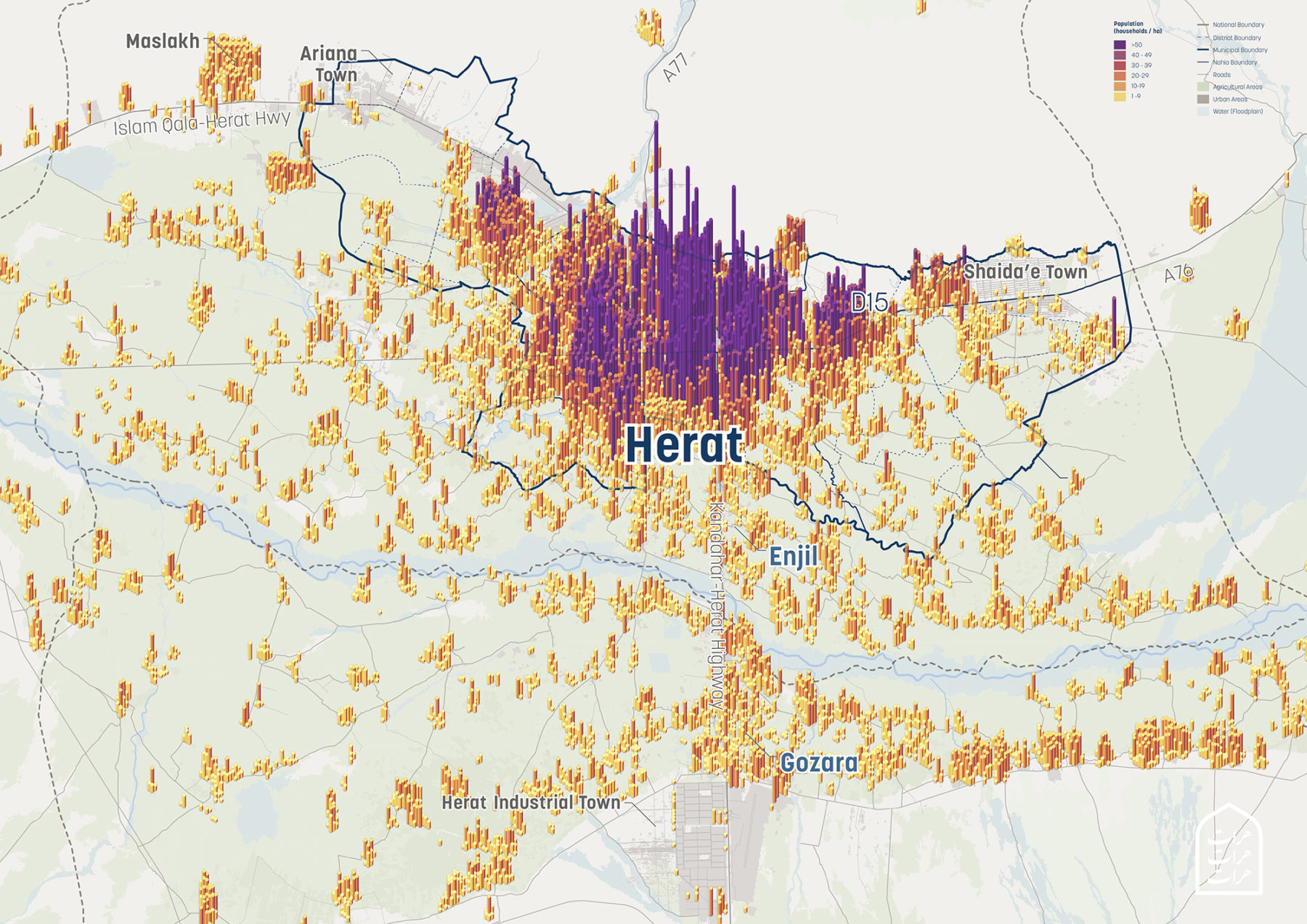
Afghan cities are characterized by dense historic core areas
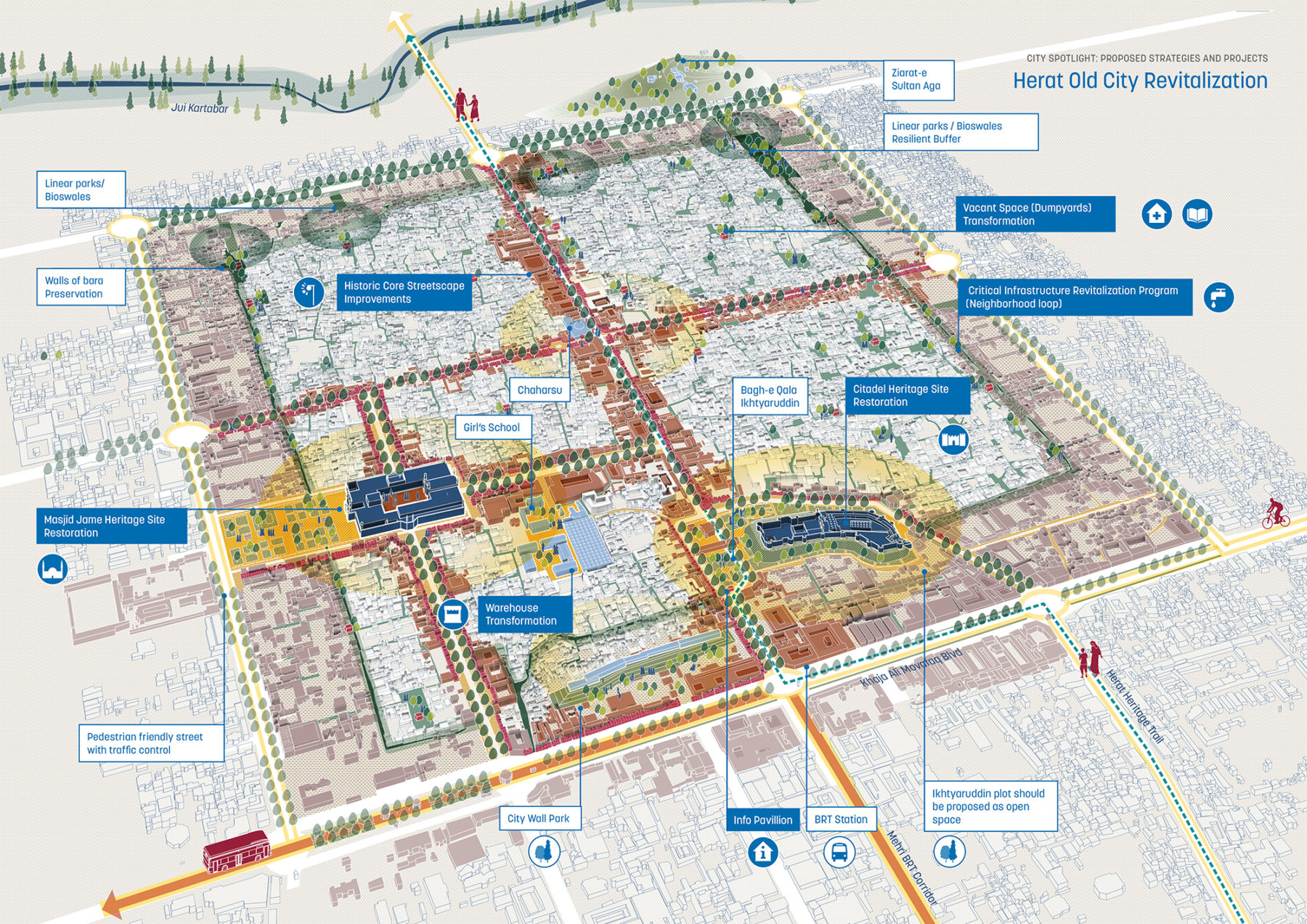
Herat Old City regeneration strategies
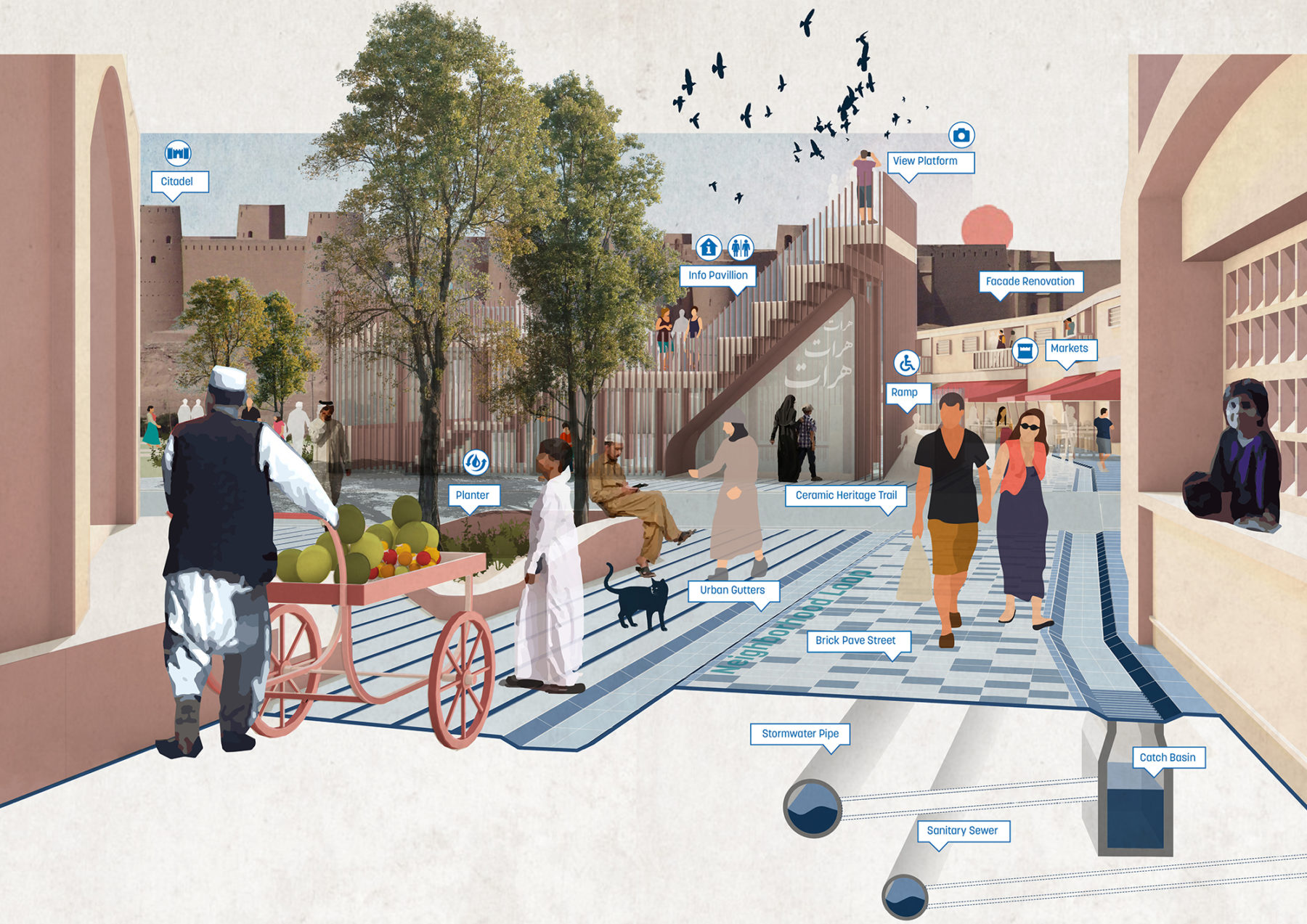
Strategic interventions in the Old City of Herat improves quality of life for residents and fosters a conservation economy
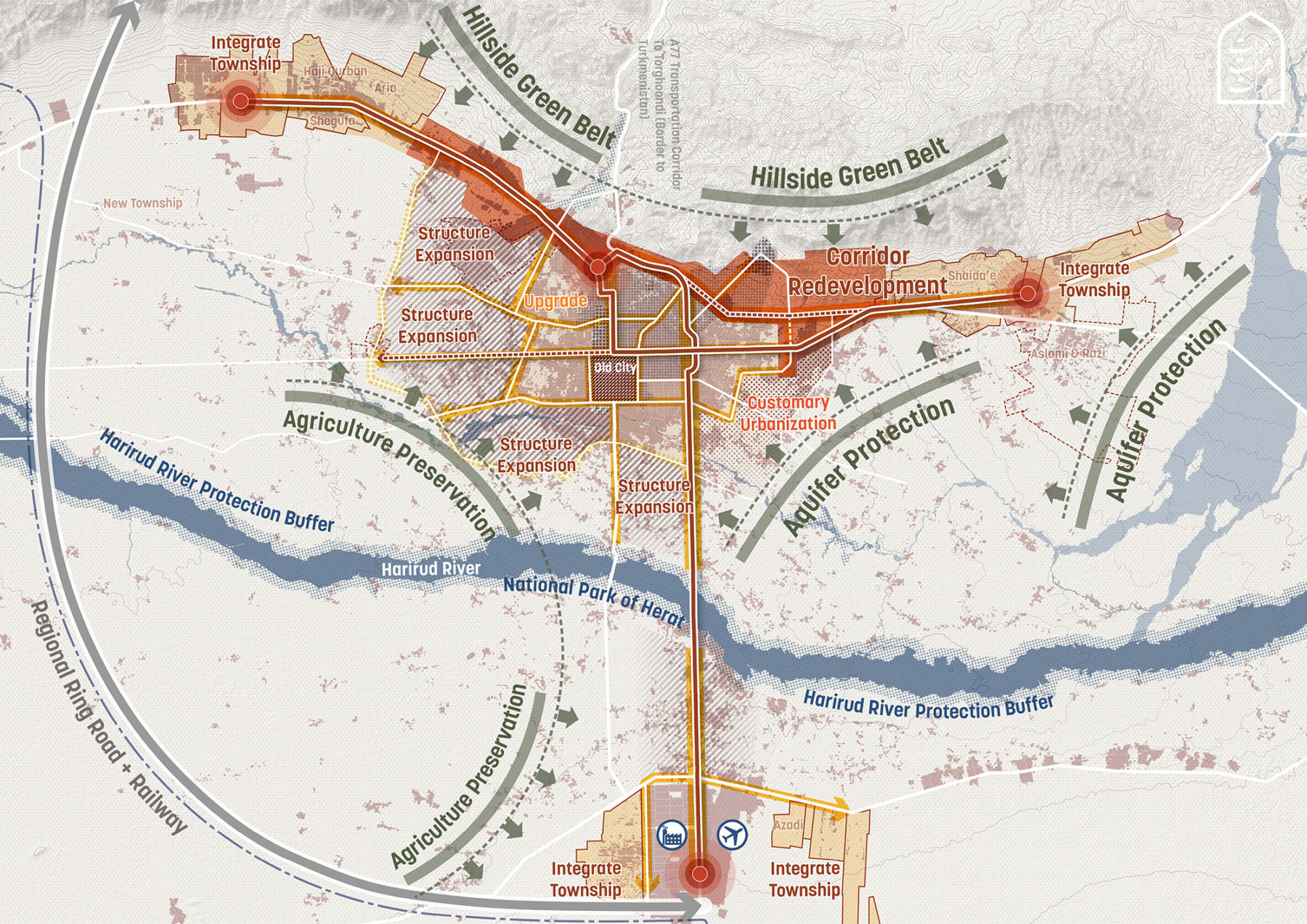
Redefining the growth trajectory of Herat for structured expansion
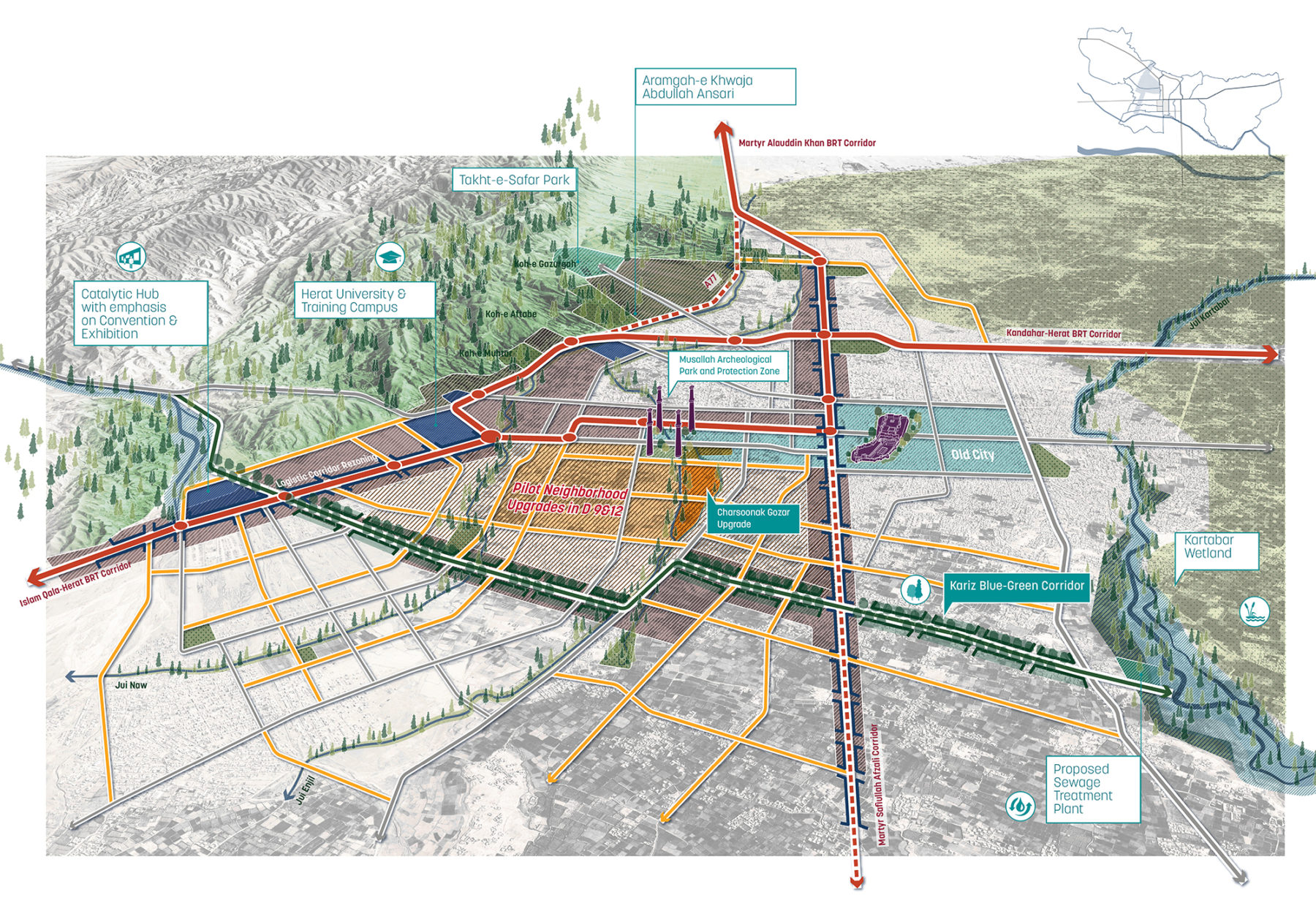
Neighborhood upgrade and structured expansion protects key heritage sites like the Musallah complex and minarets
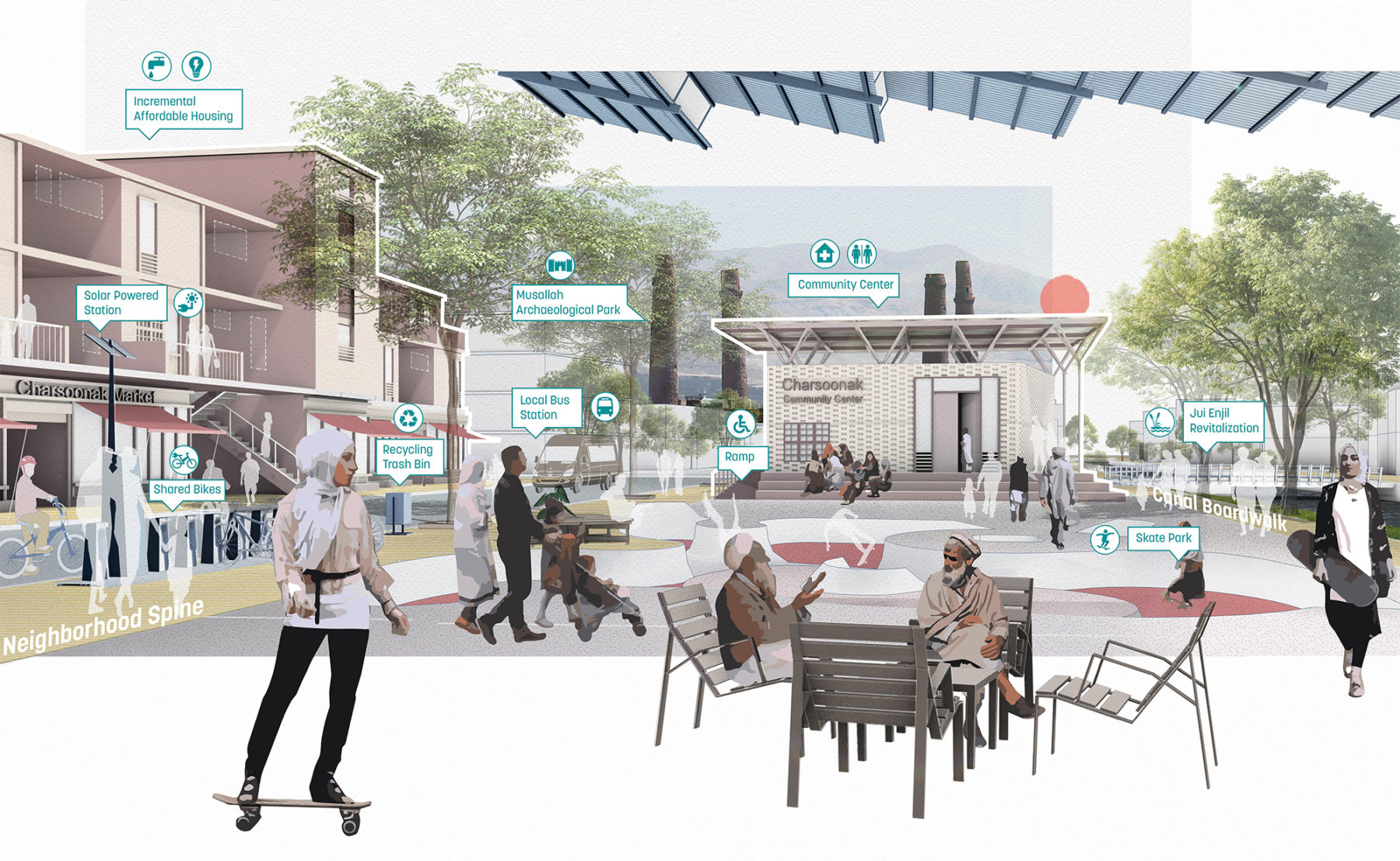
Neighborhood upgrade with integrated community facilities and incremental social housing
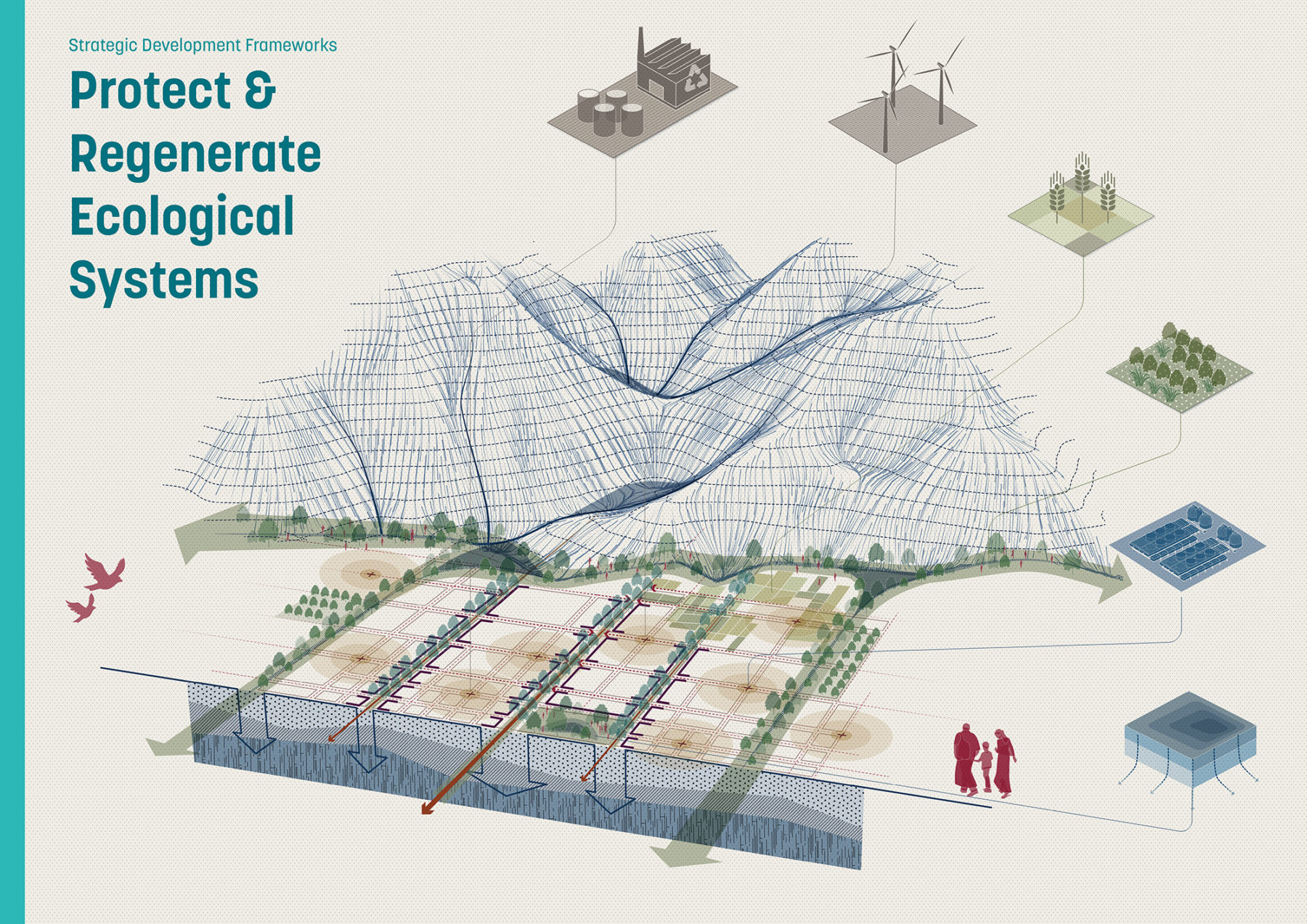
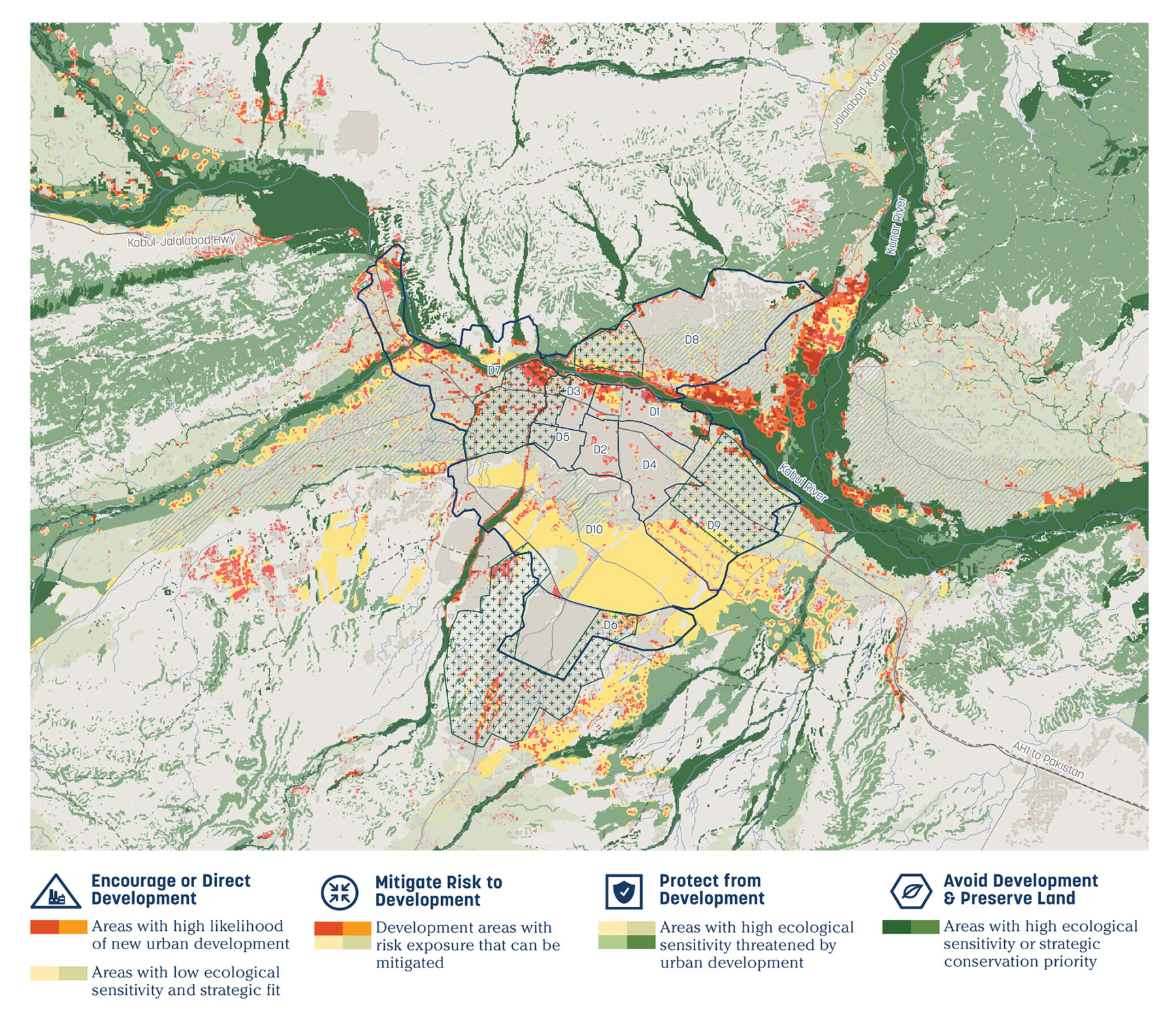
Landscape and ecology analysis established key conservation areas based on environmental and agricultural significance
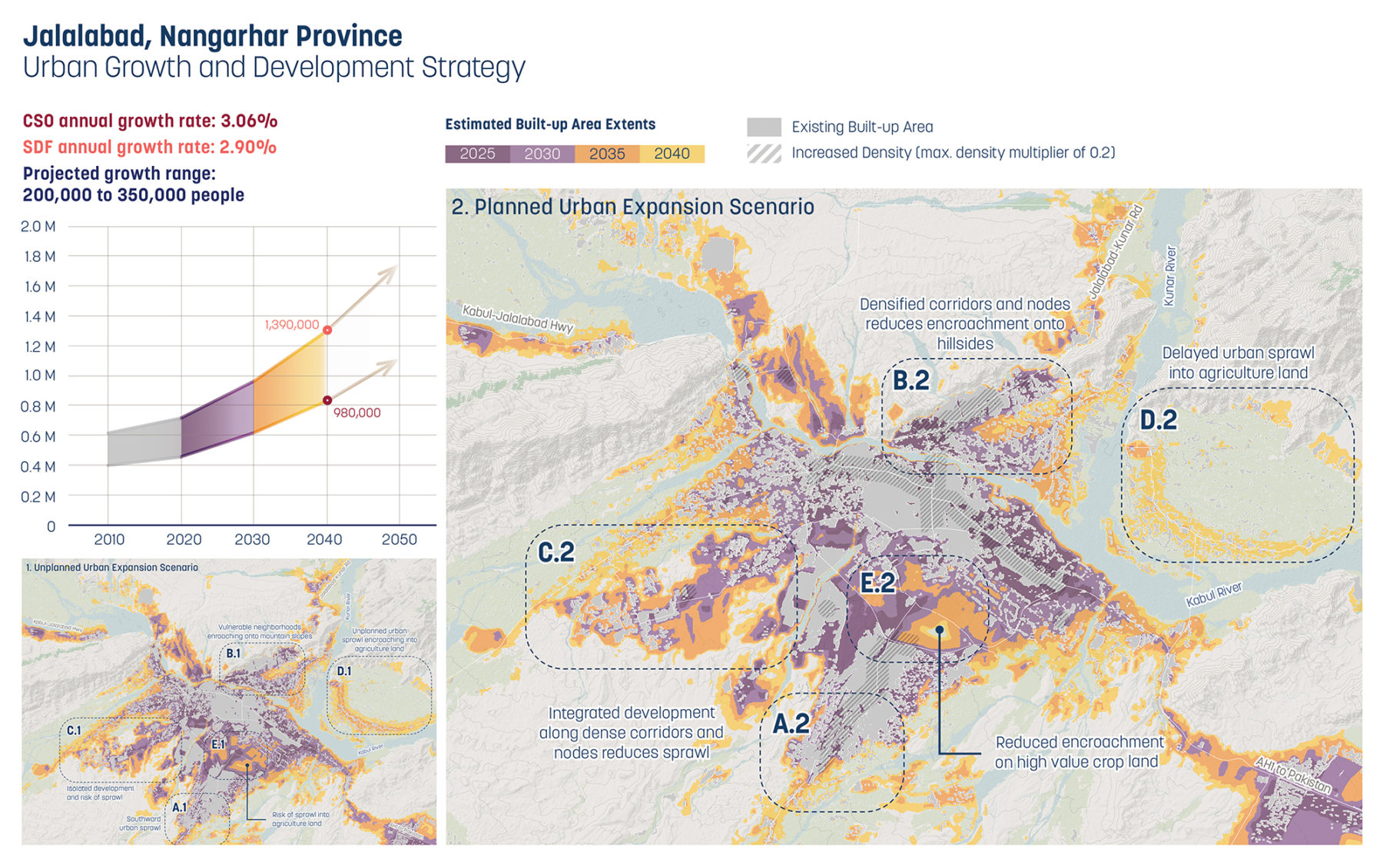
A set of algorithms were developed to simulate urban expansion scenarios that could accommodate projected population growth while protecting critical open space systems
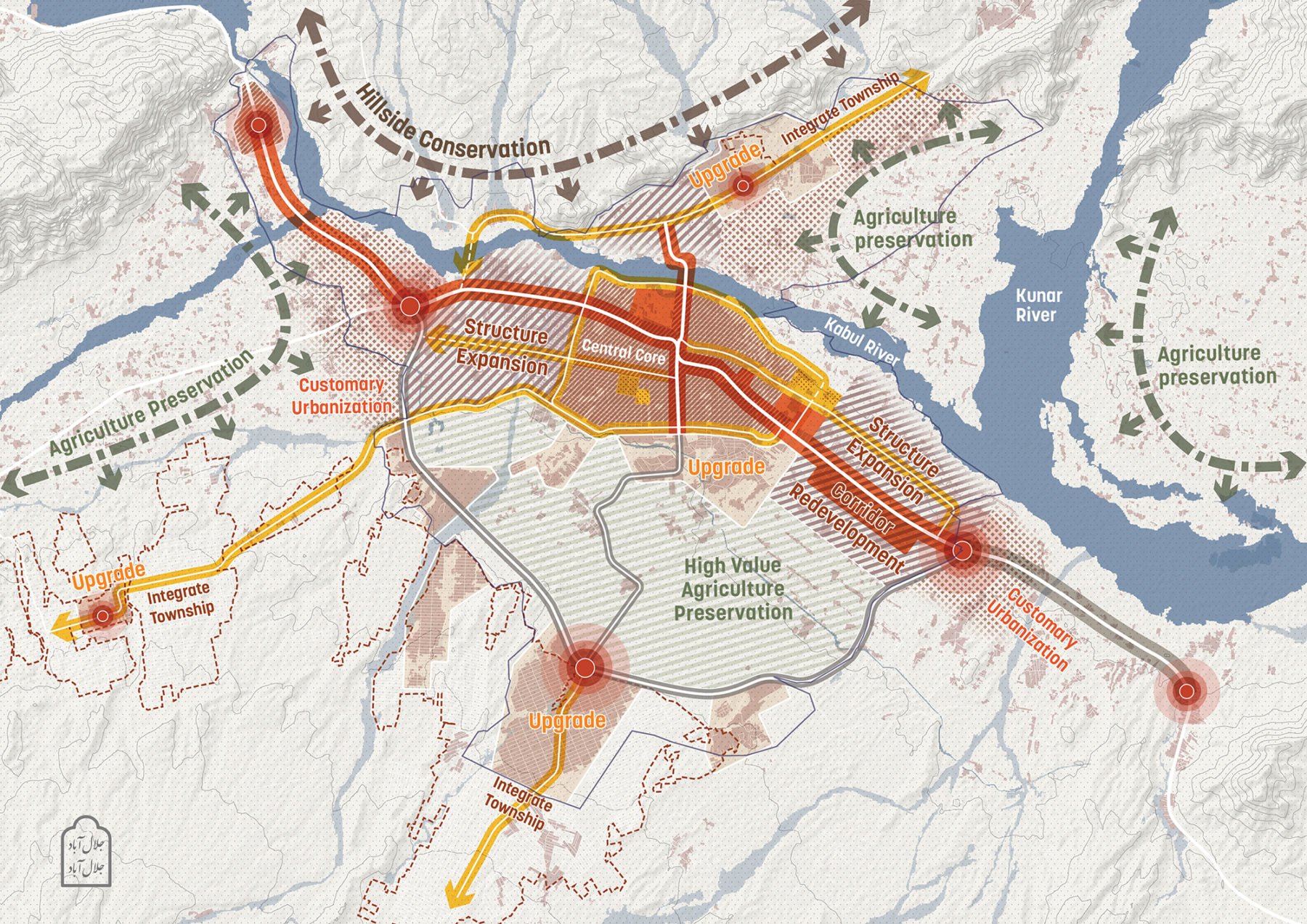
A resulting development framework ensures a balanced approach for the growth of each city, setting up a range of capital investments in infrastructure, mobility, and community services that supports urban and rural livelihoods (Jalalabad pictured here)
Landscape and ecology analysis established key conservation areas based on environmental and agricultural significance
A set of algorithms were developed to simulate urban expansion scenarios that could accommodate projected population growth while protecting critical open space systems
A resulting development framework ensures a balanced approach for the growth of each city, setting up a range of capital investments in infrastructure, mobility, and community services that supports urban and rural livelihoods (Jalalabad pictured here)
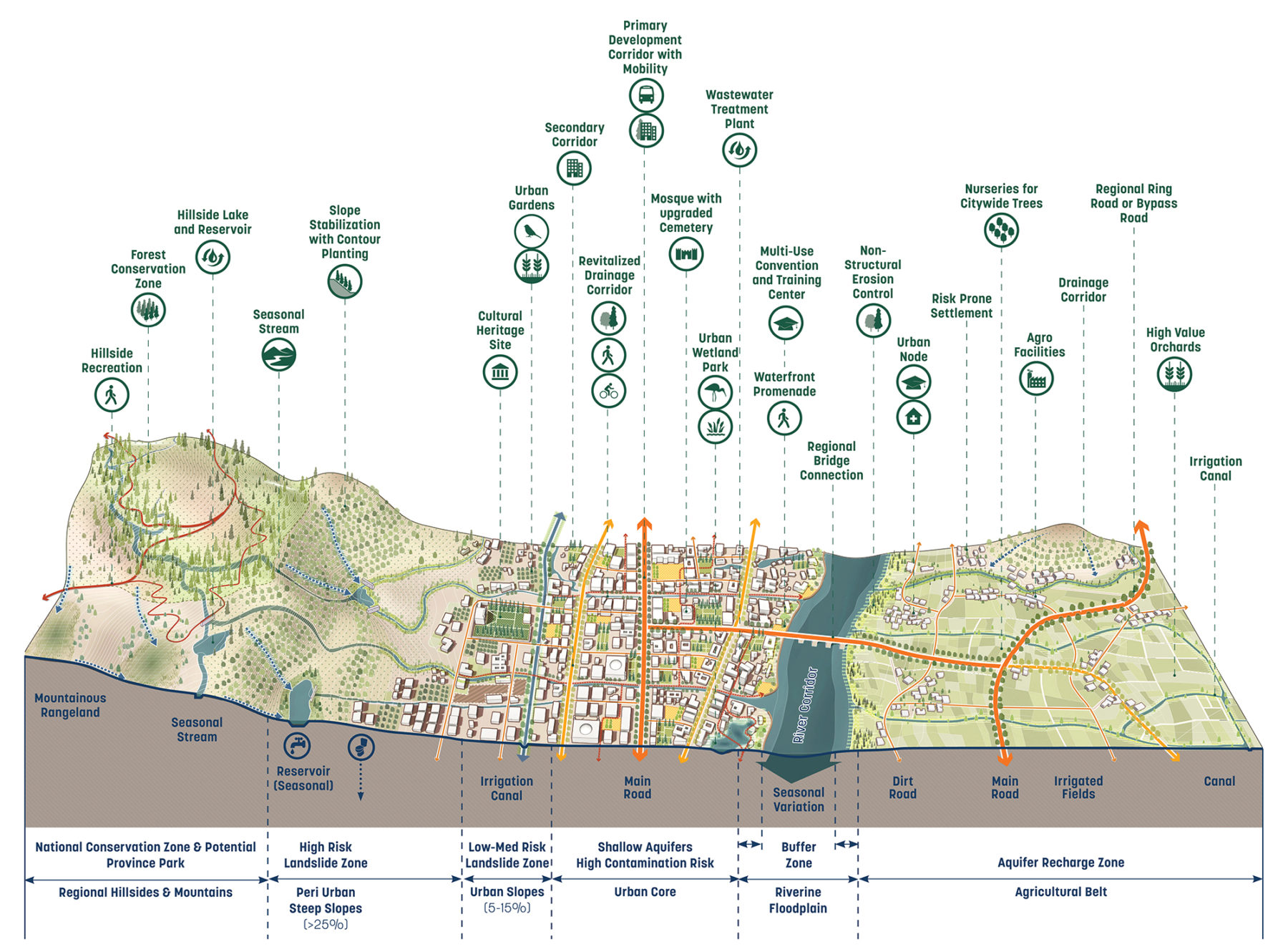
A landscape implementation toolkit illustrates a host of initiatives to be undertaken across different landscape types
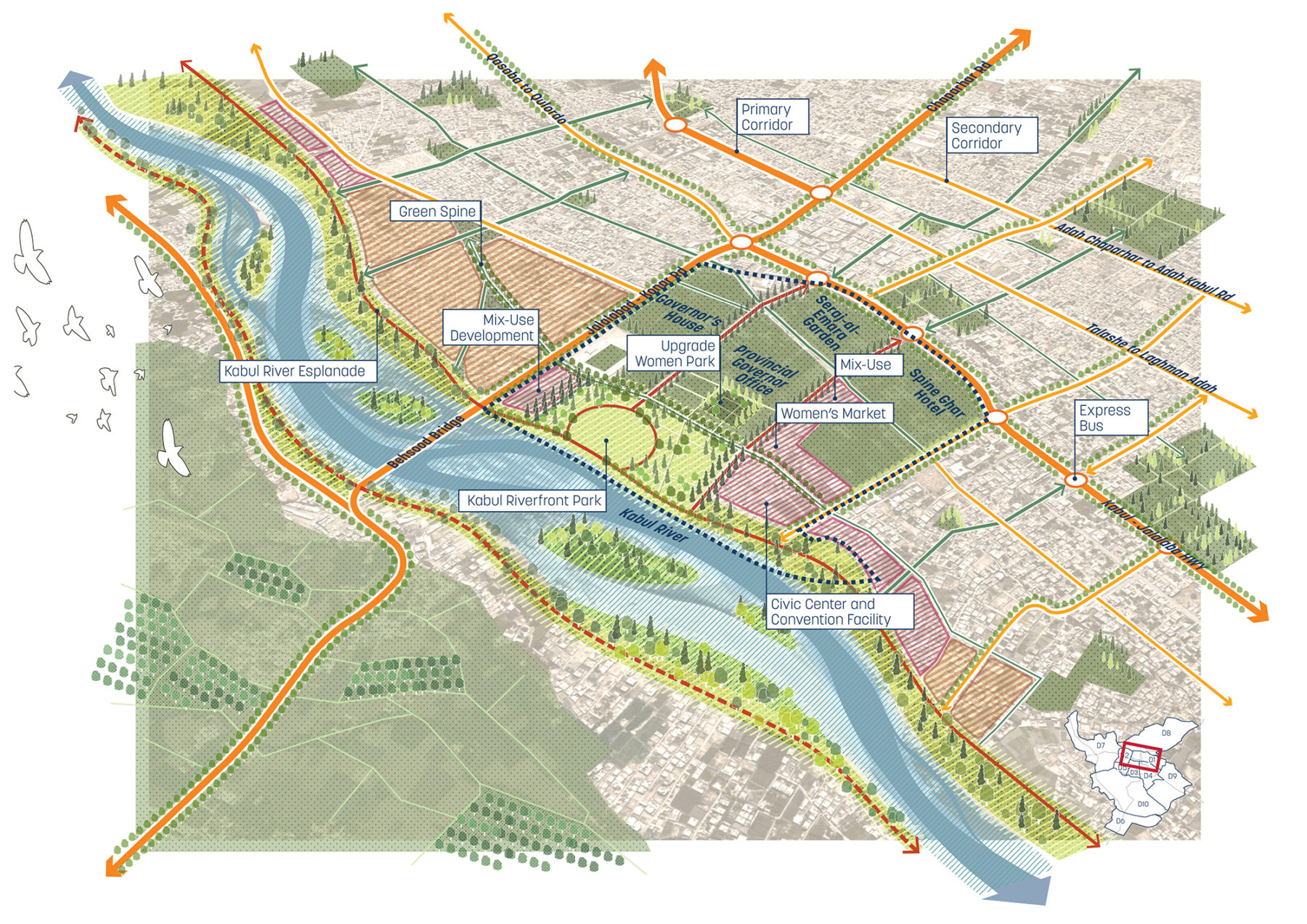
Catalytic projects, such as the Jalalabad Riverfront, tie community benefits to investments in urban resilience
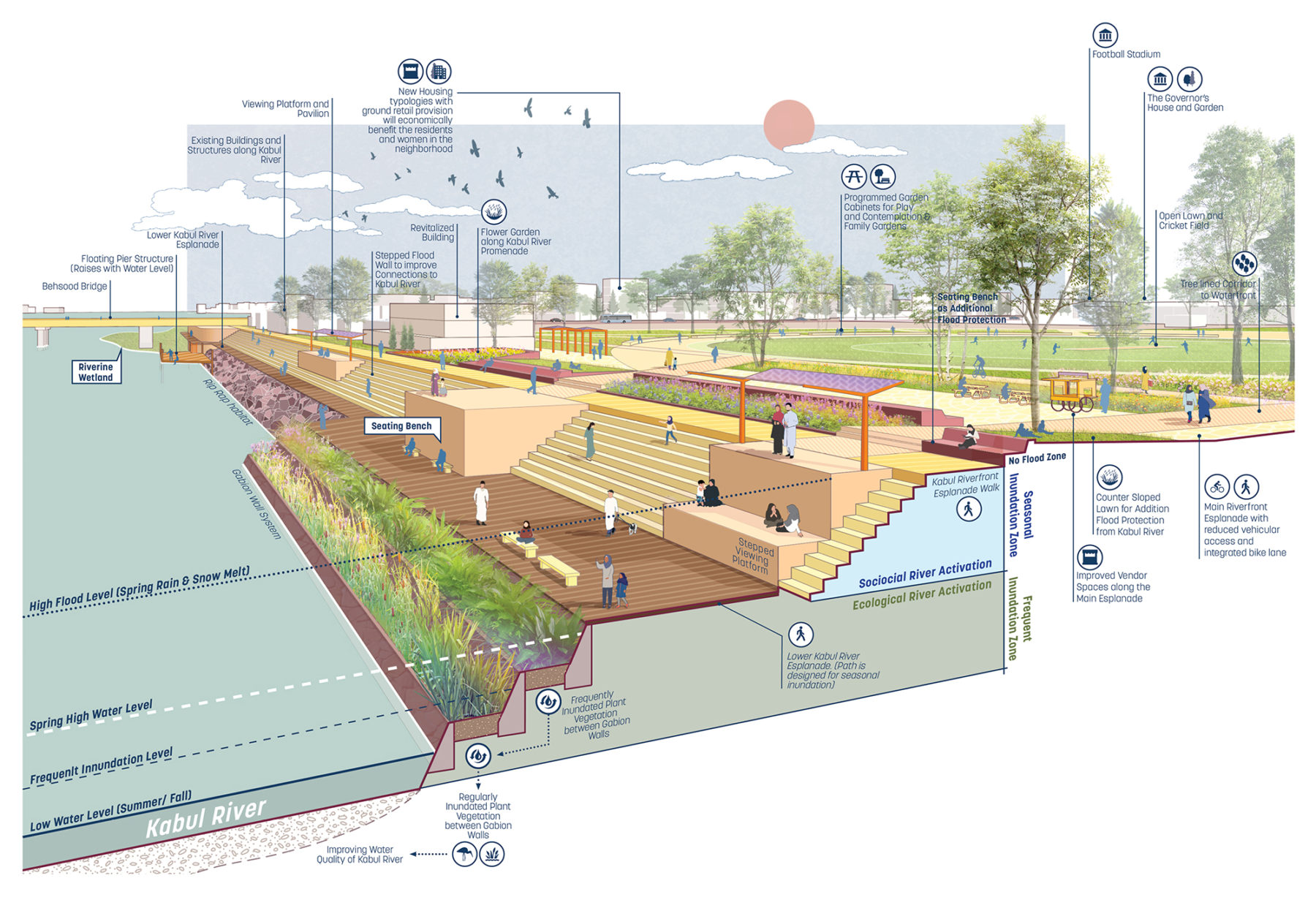
The Jalalabad riverfront park protects the core of the city from seasonal flood events while creating a new paradigm of hybrid infrastructure
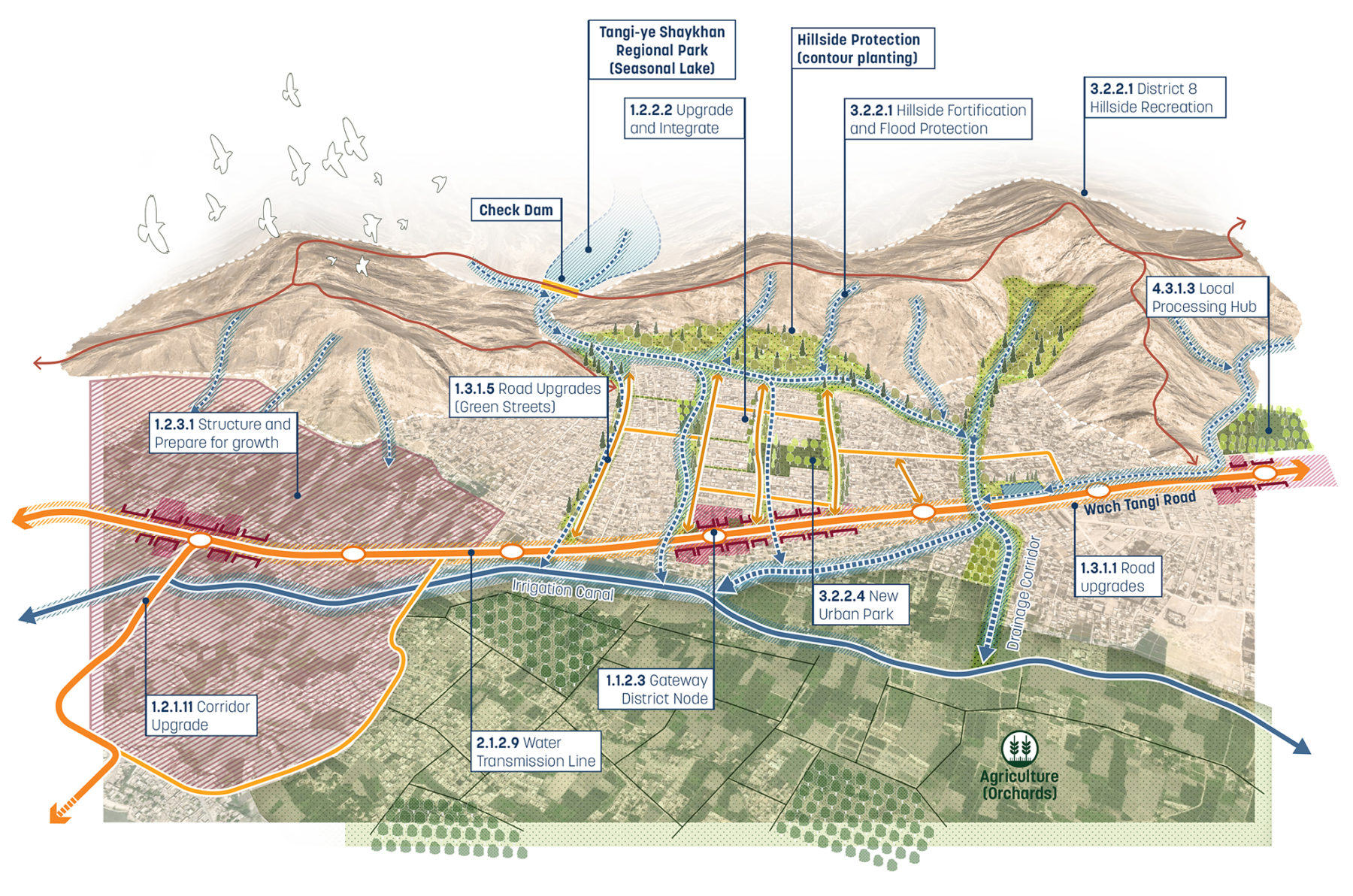
A risk assessment established a range of strategies to protect vulnerable communities from landslides and flash flooding
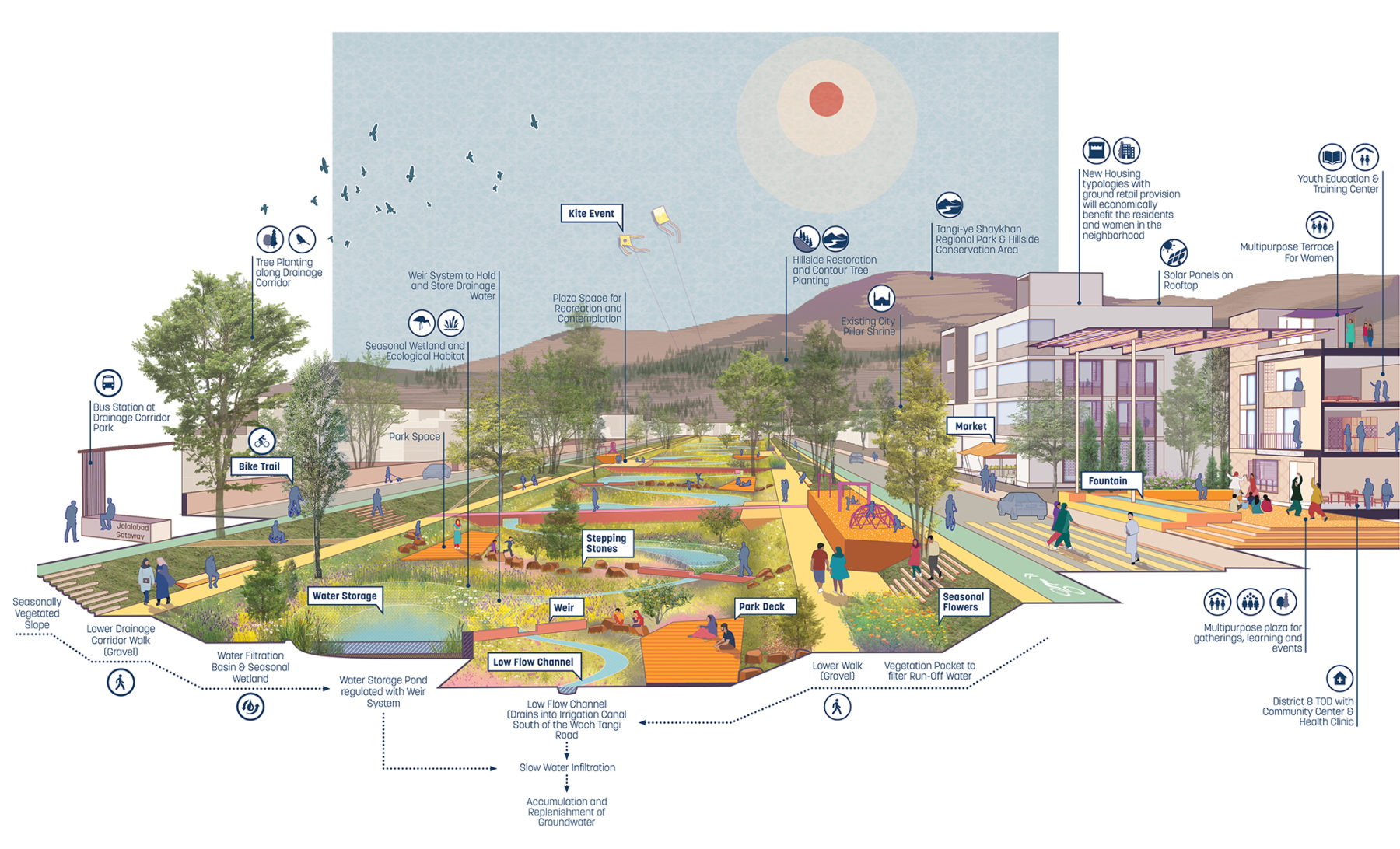
Integrated social and resiliency infrastructure in a vulnerable community in Jalalabad
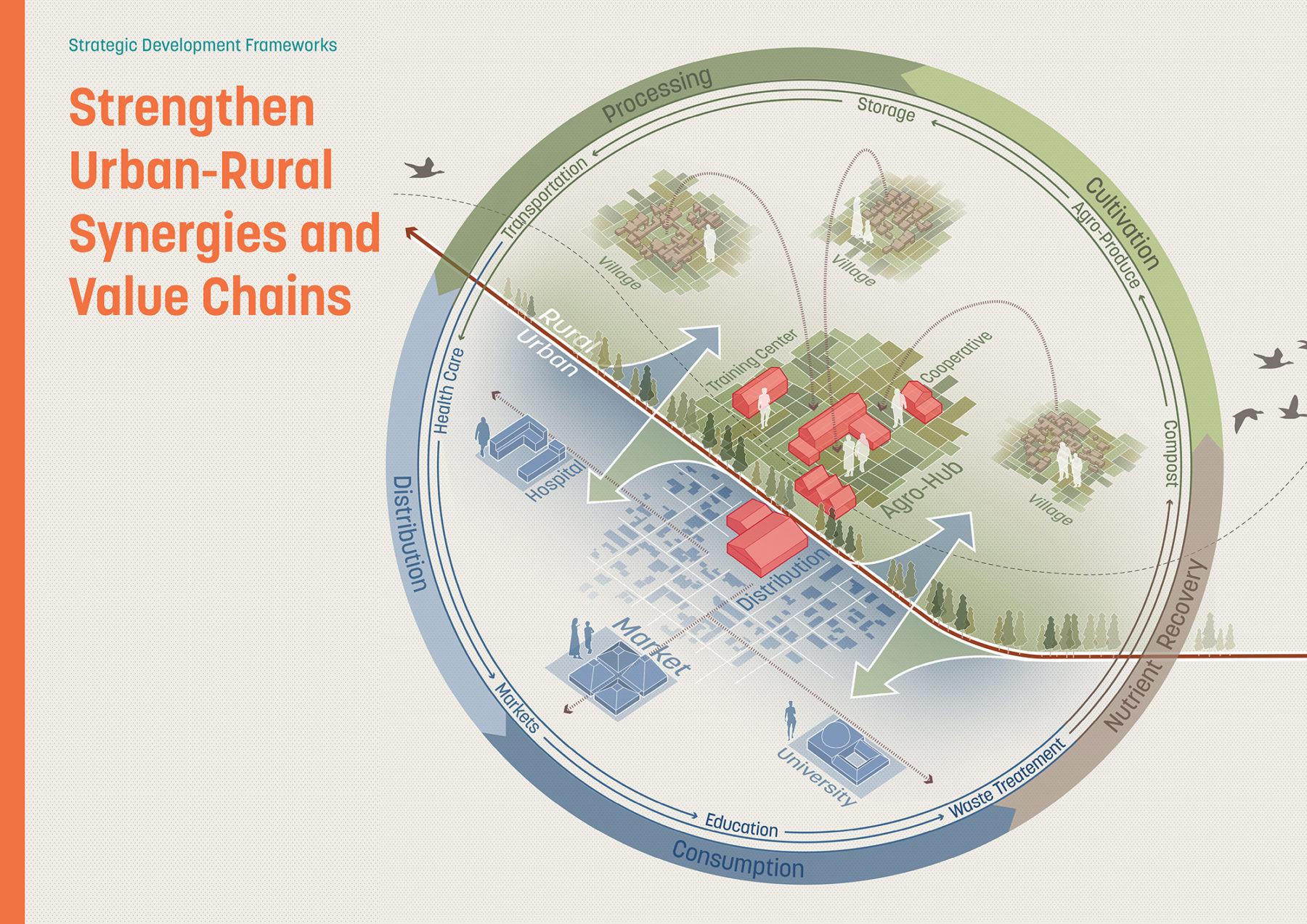
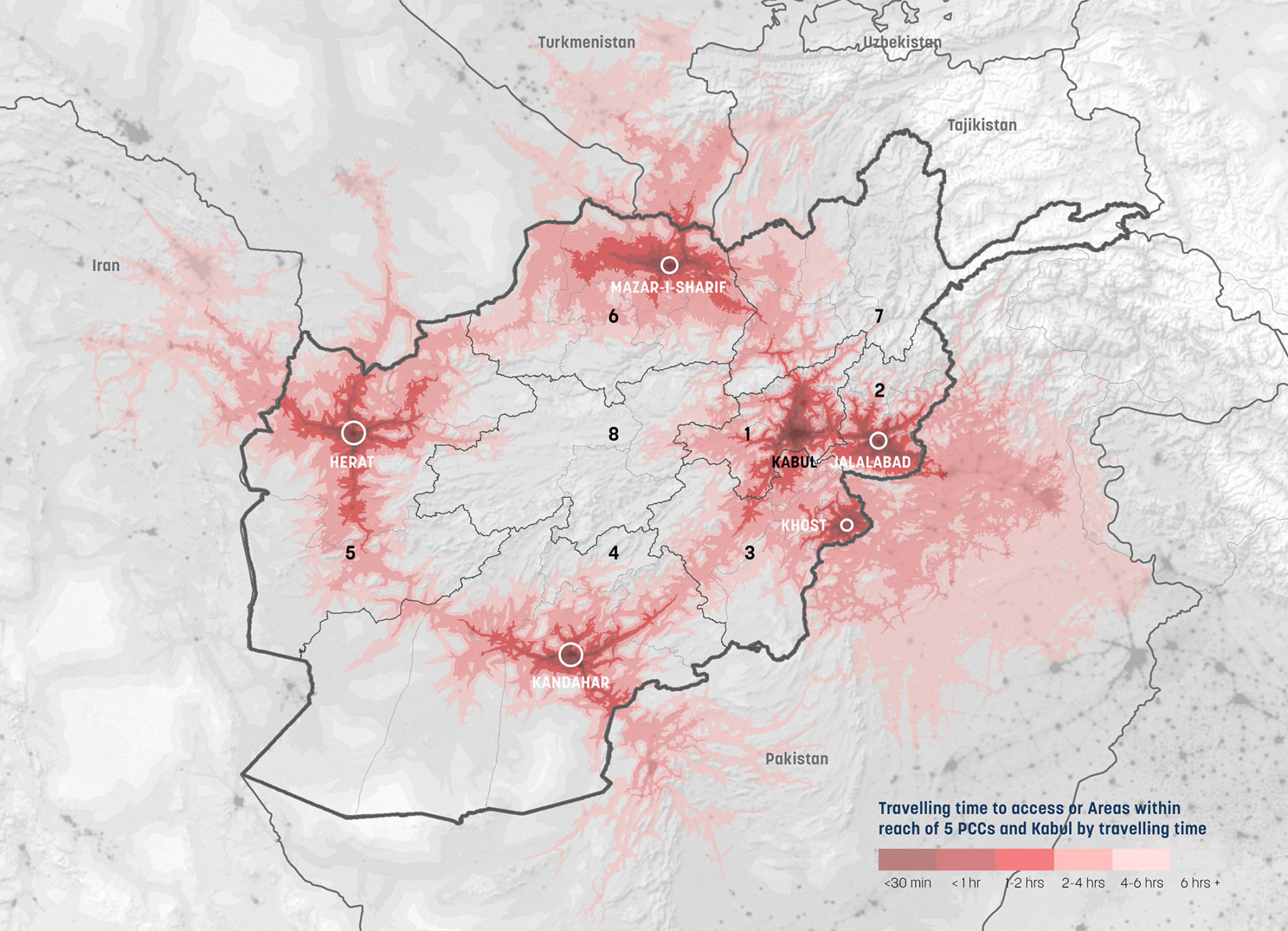
Each provincial capital is the hub and must support the livelihoods of much larger city-regions
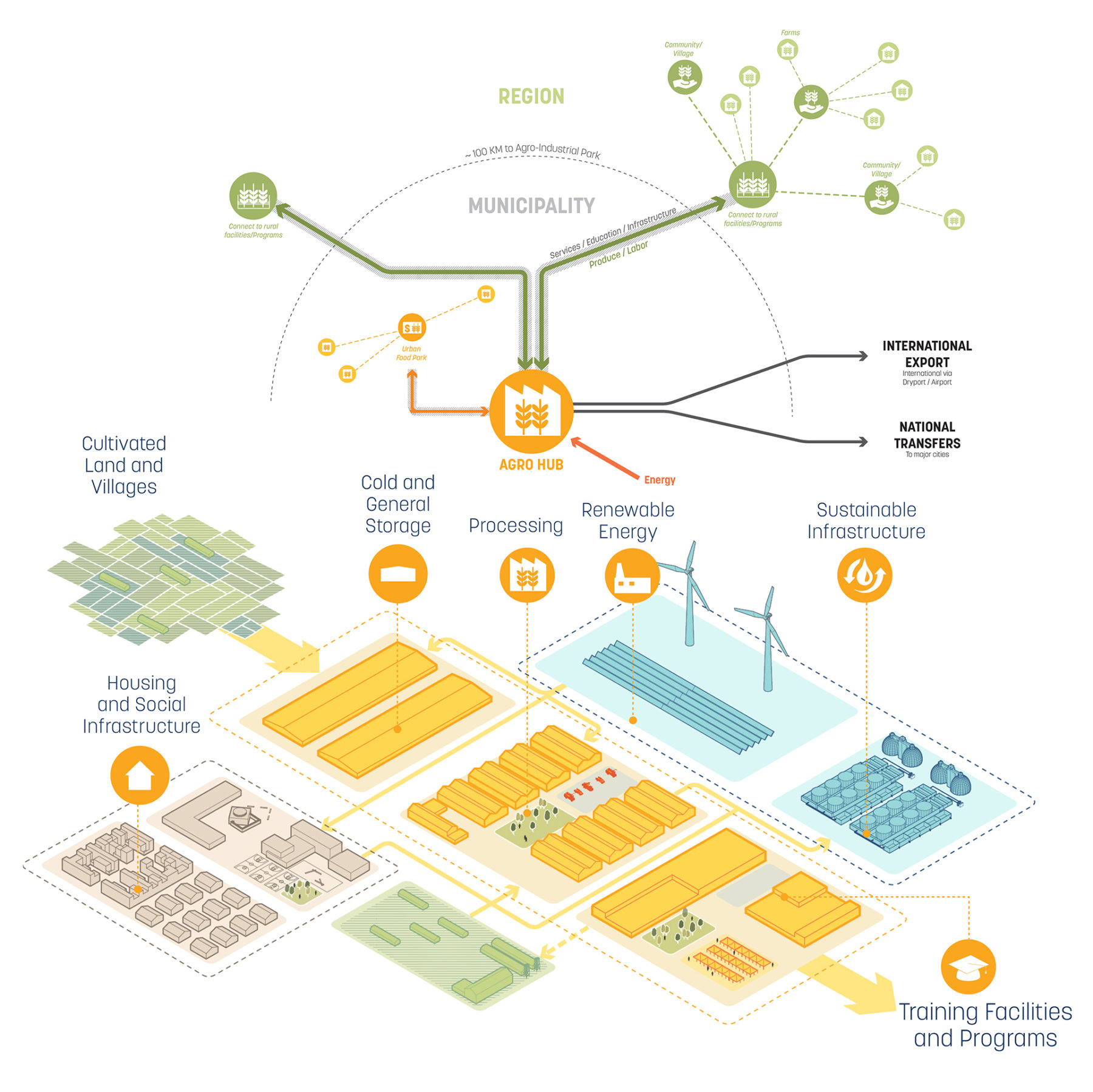
A network of Agricultural Hubs are proposed to promote regional economic development and strengthen value chains
Each provincial capital is the hub and must support the livelihoods of much larger city-regions
A network of Agricultural Hubs are proposed to promote regional economic development and strengthen value chains
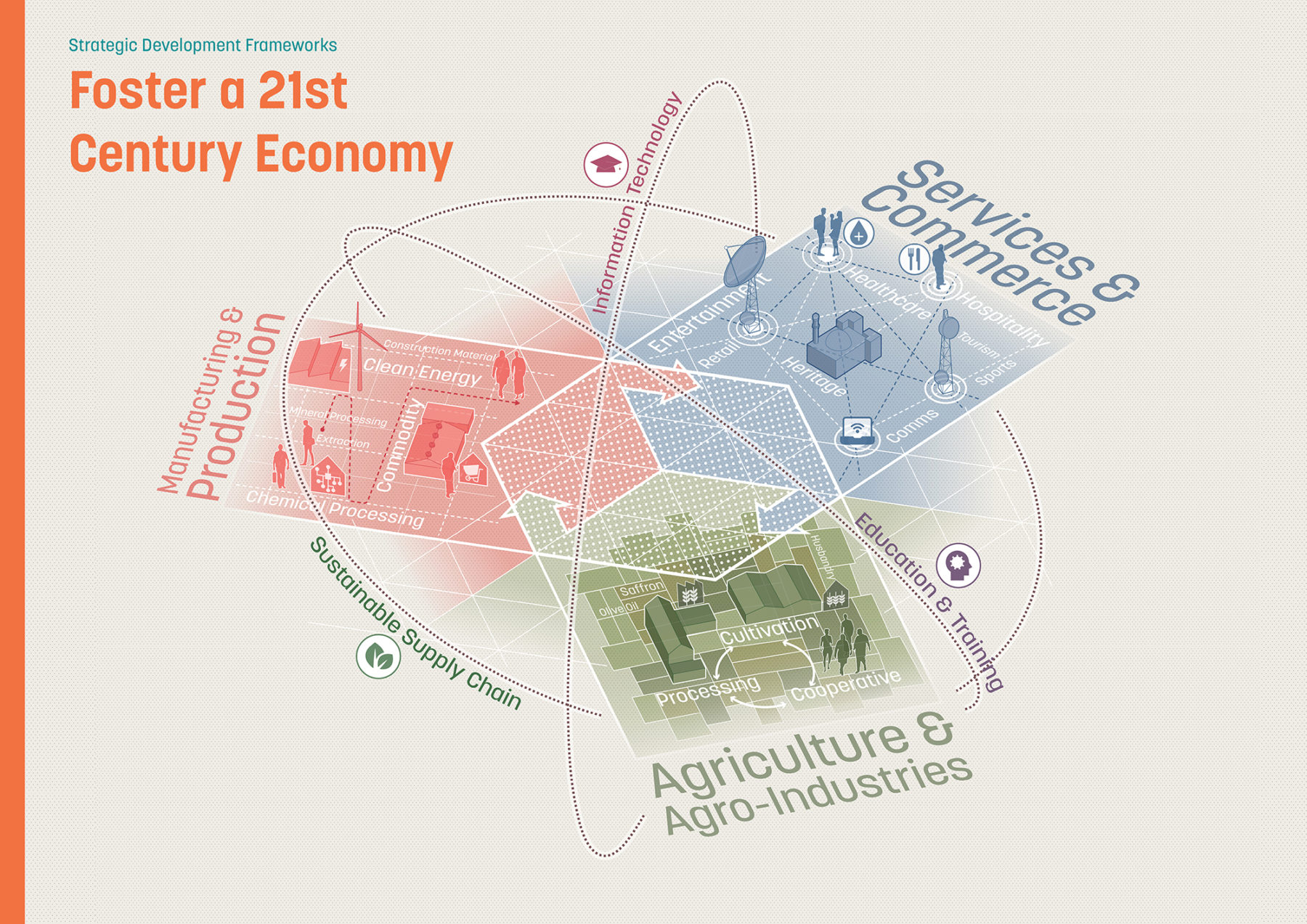
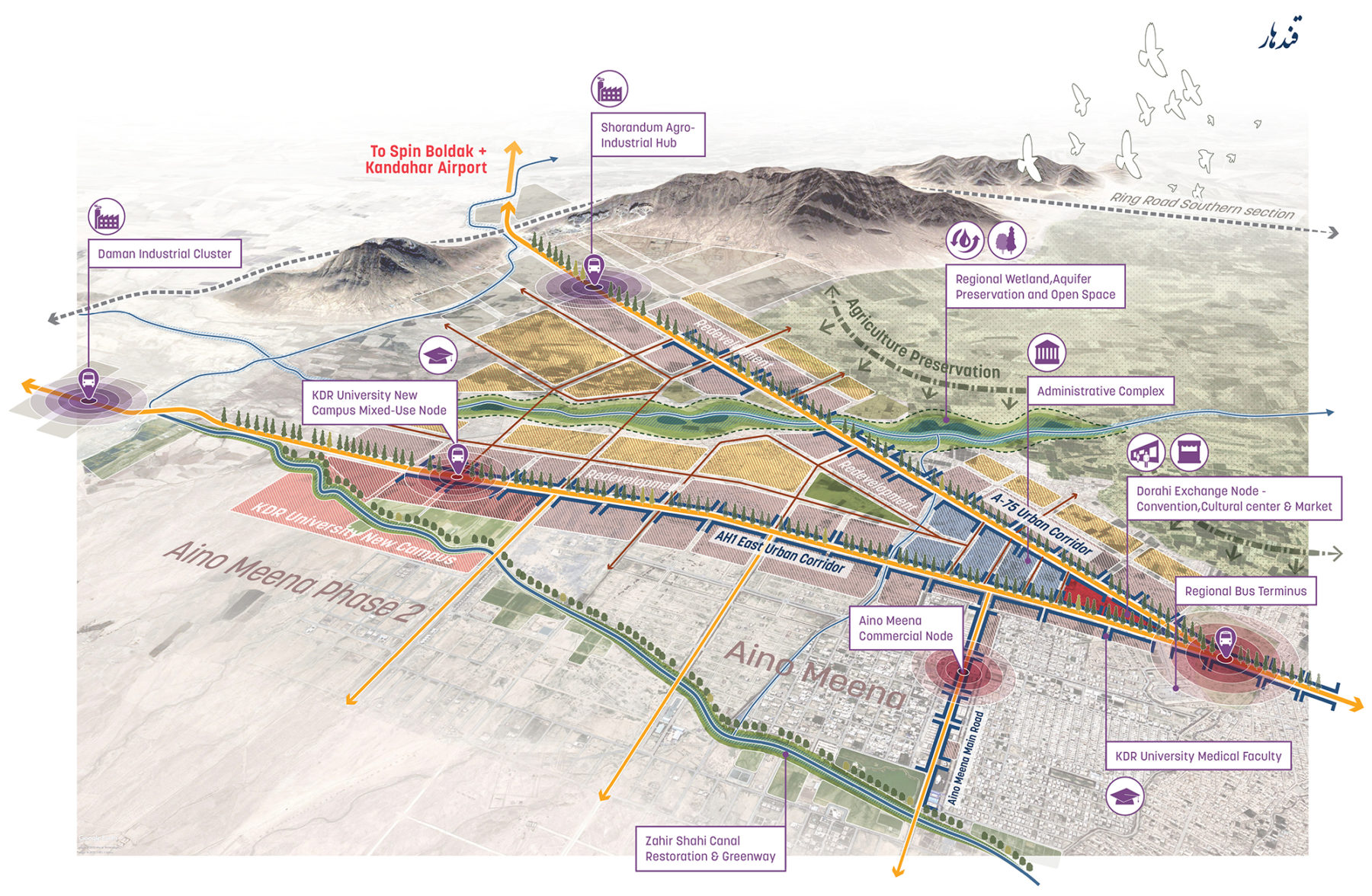
Investment in an emerging district of Kandahar aligns urban growth with economic opportunity
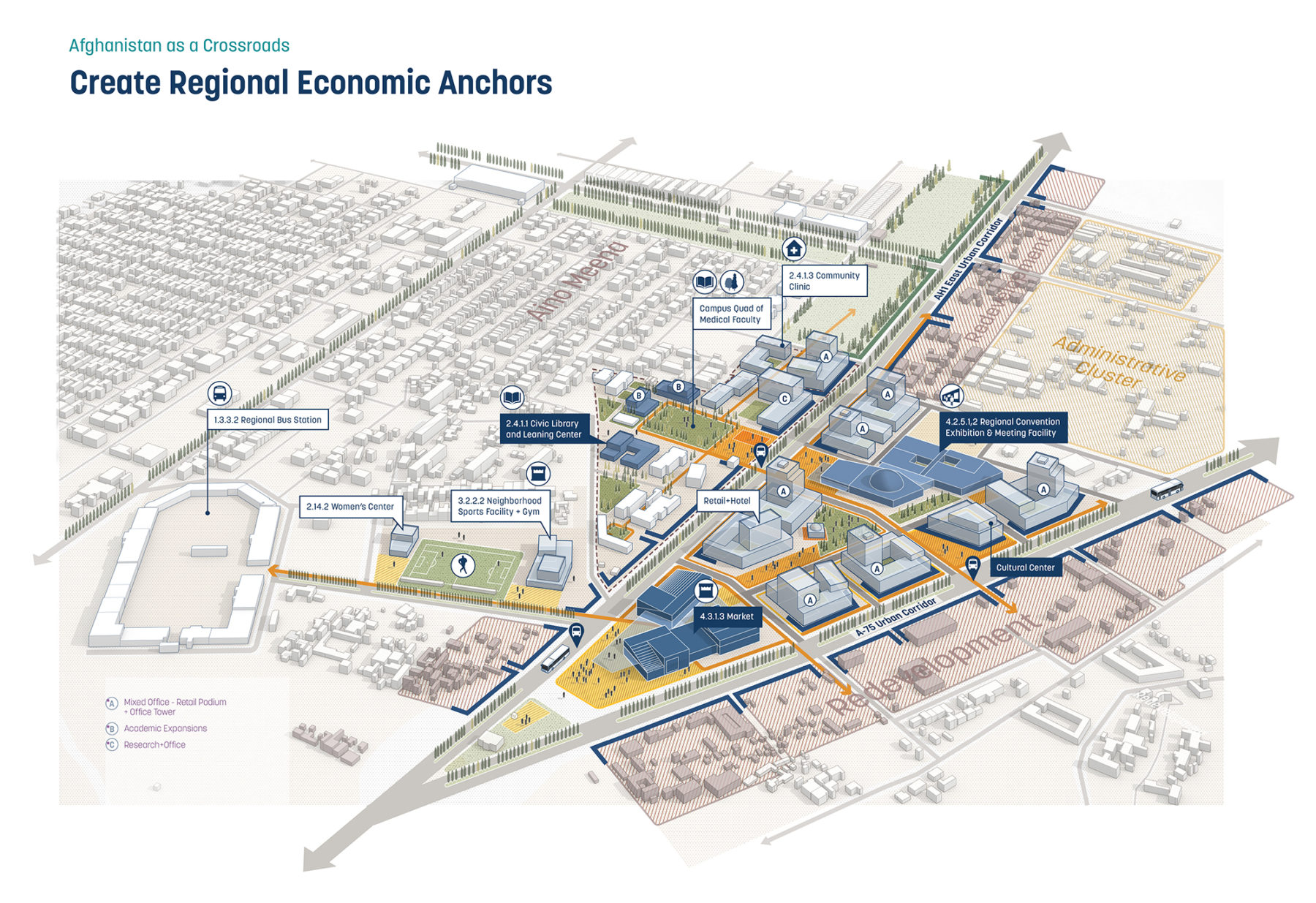
A new urban node creates a strong regional economic anchor for Kandahar
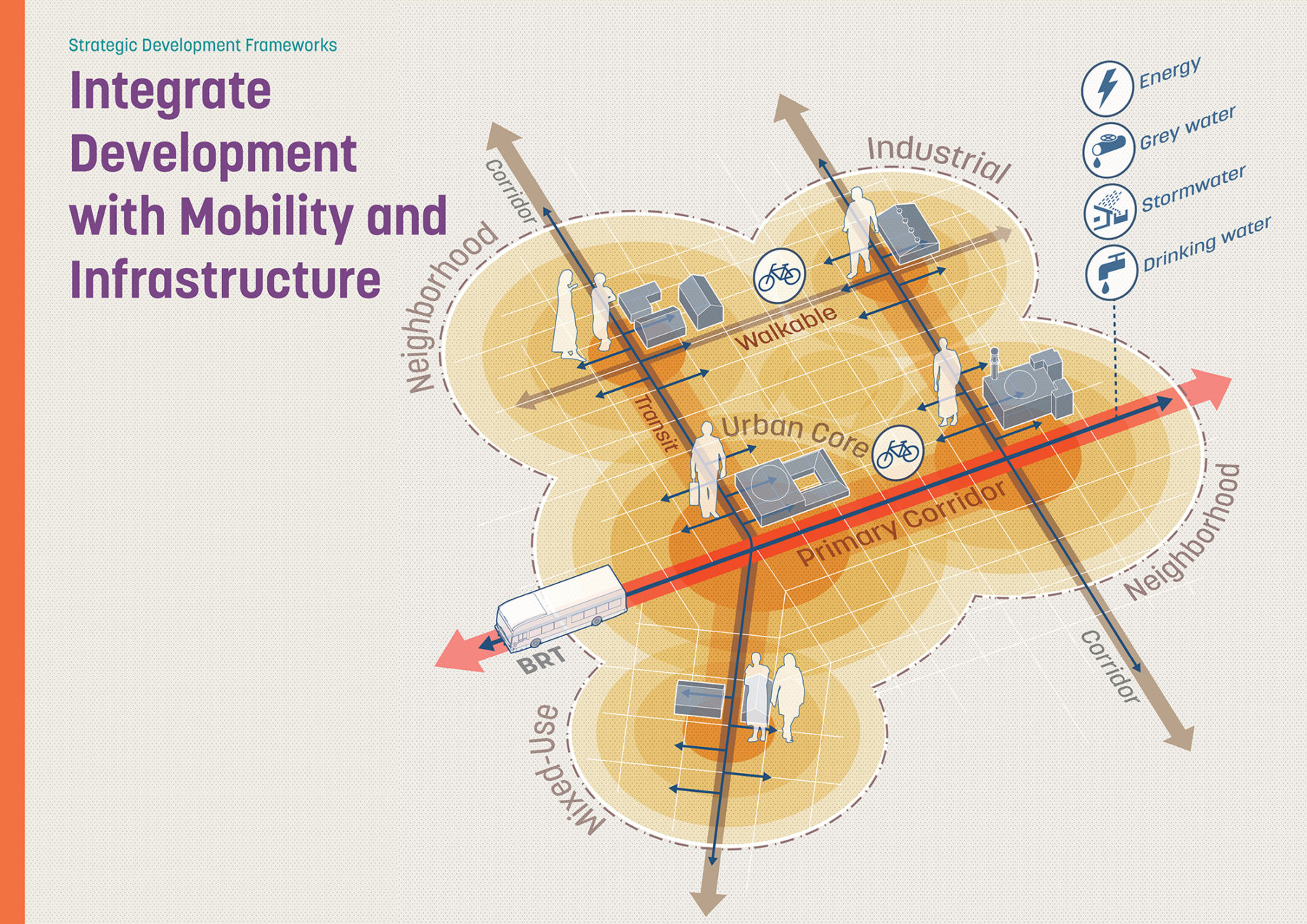
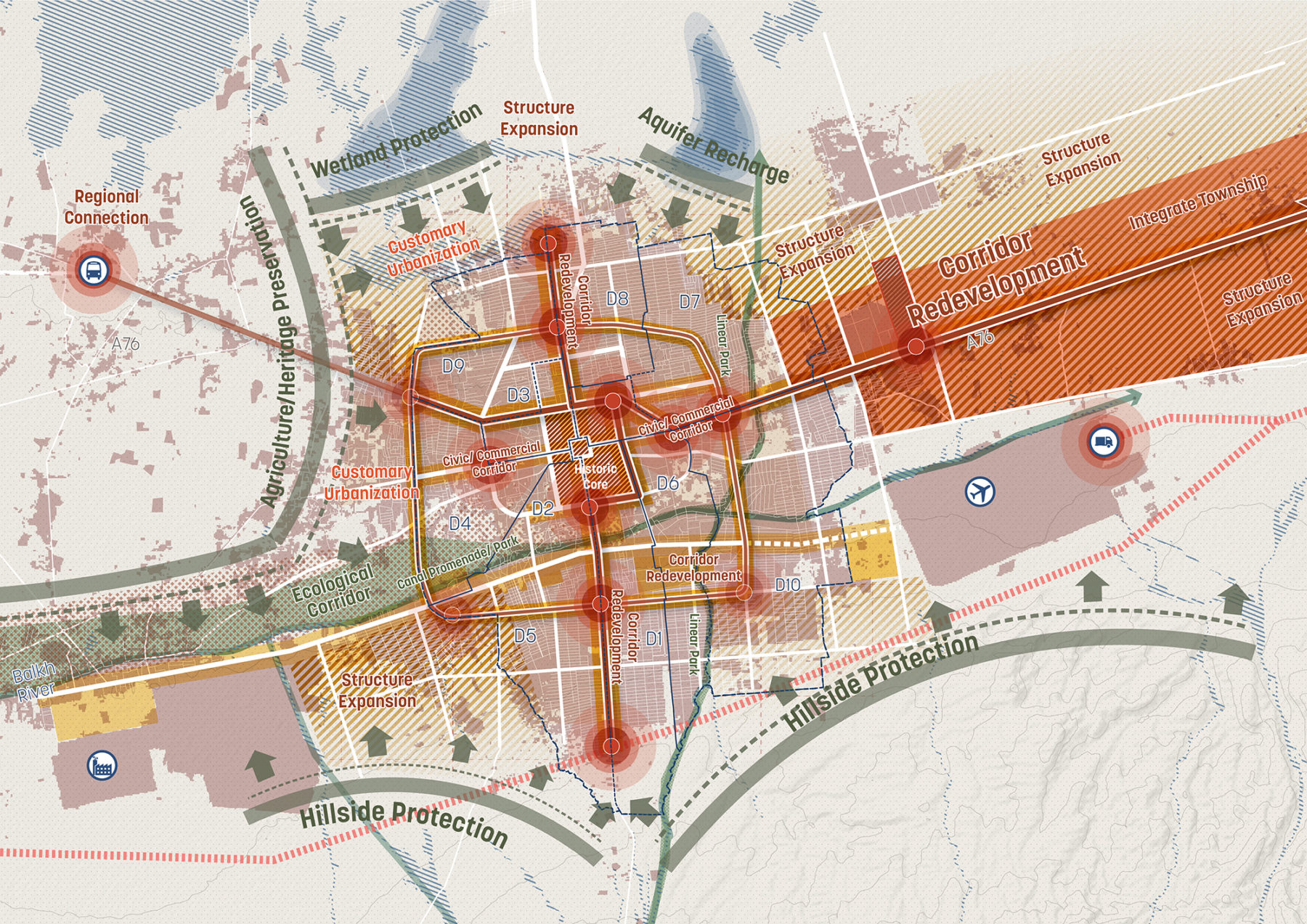
Fast growing cities like Mazar-e-Sharif will promote development along new Bus Rapid Transit Corridors
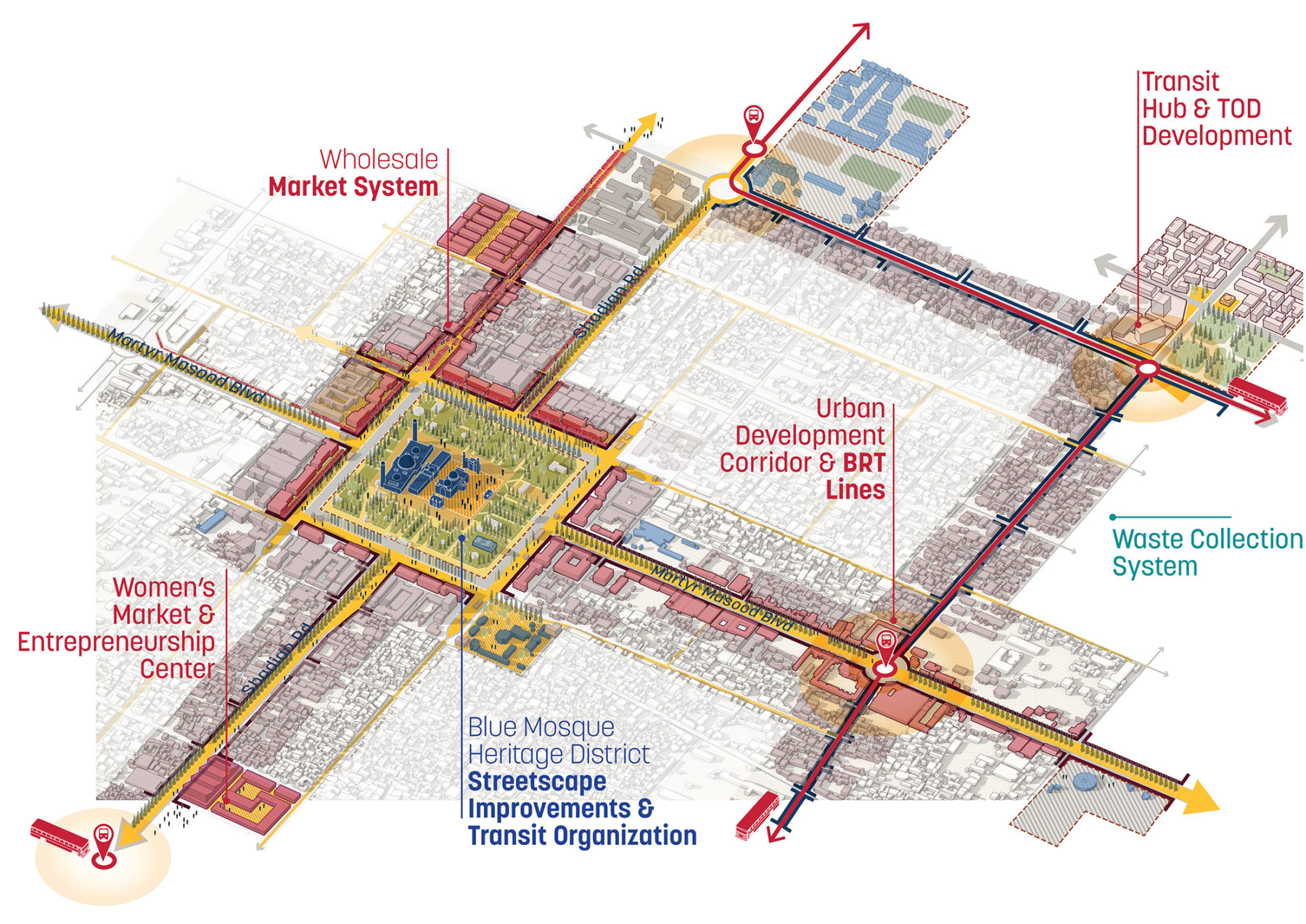
Coordinated investments in mobility and development promote a compact, sustainable city
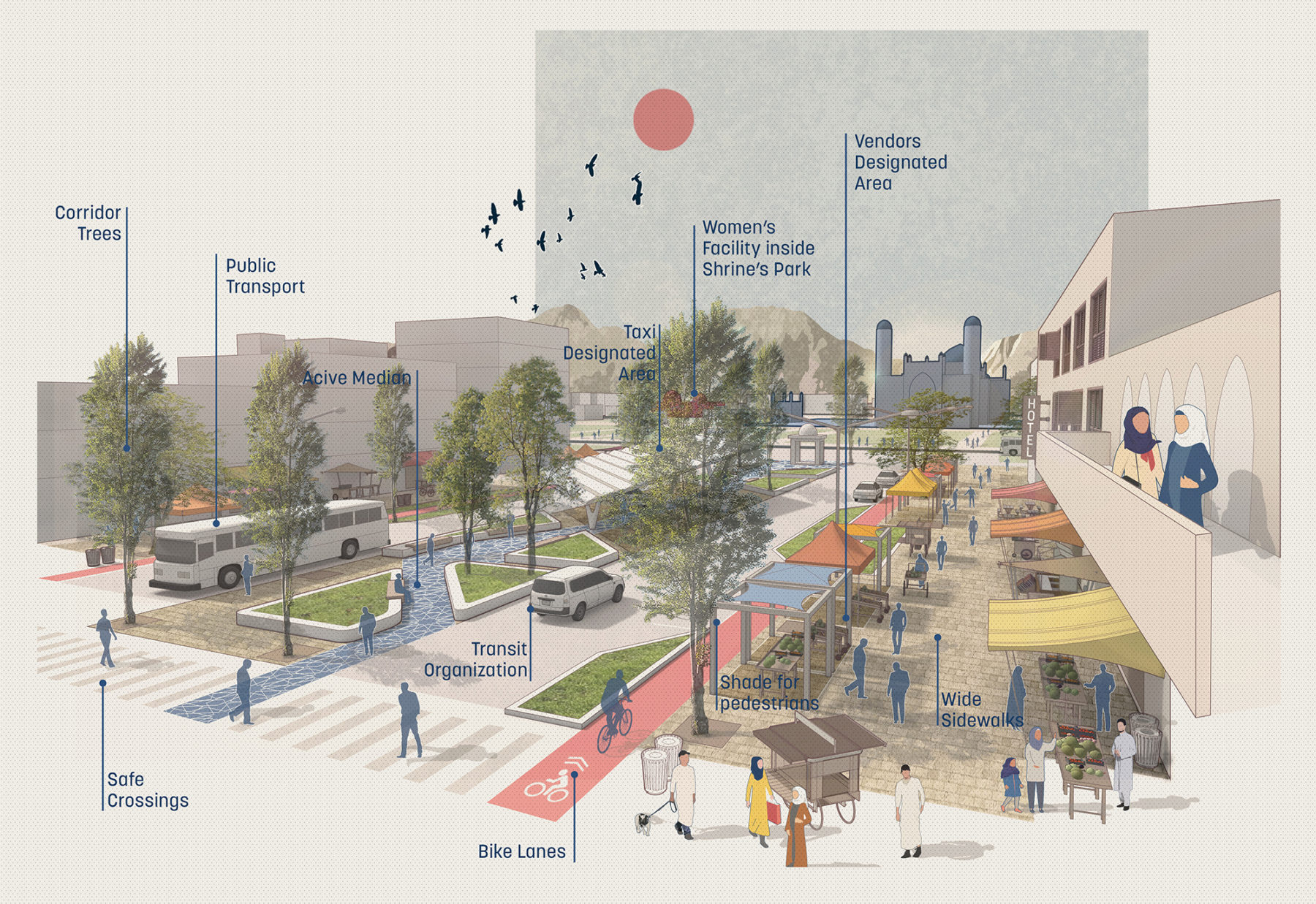
Catalytic public realm projects and transit integration improve quality of life in the central core of Mazar
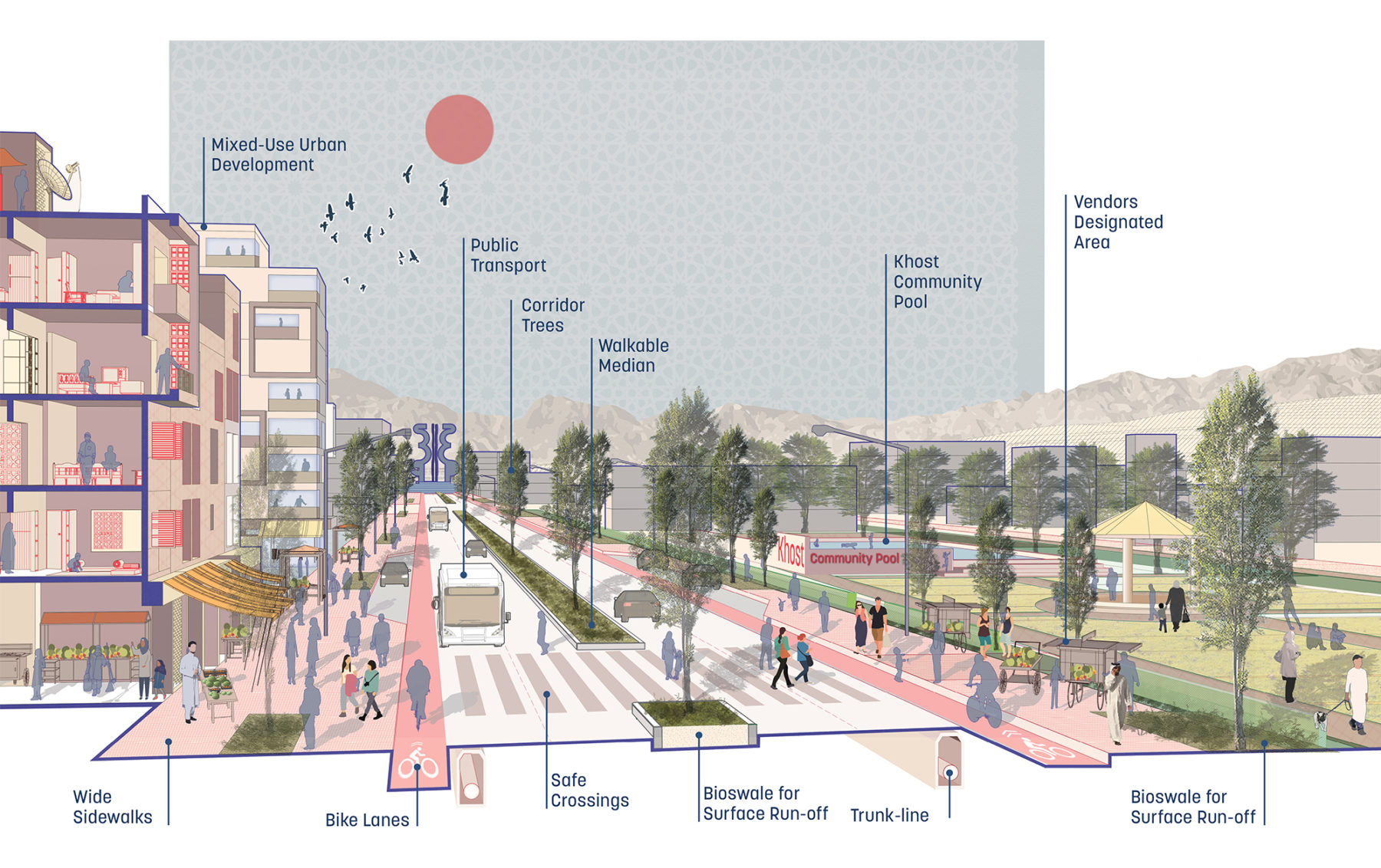
Second-tier cities like Khost reinforce their identity with catalytic investments in primary urban corridors
In addition to building consensus through stakeholder outreach, Sasaki used an evidence-based approach to develop a roadmap for investment and decision making in each city. In a country that has not had a national census since the 1970s, collecting and verifying data was no easy task. Drawing on every source available – from global land-use datasets to our own household survey, Sasaki developed a Baseline Data Assessment to map each city and develop benchmarks. This data provided a common, informative foundation for engagement with stakeholders and drives the assessment of strategies and goals for the Strategic Development Frameworks.
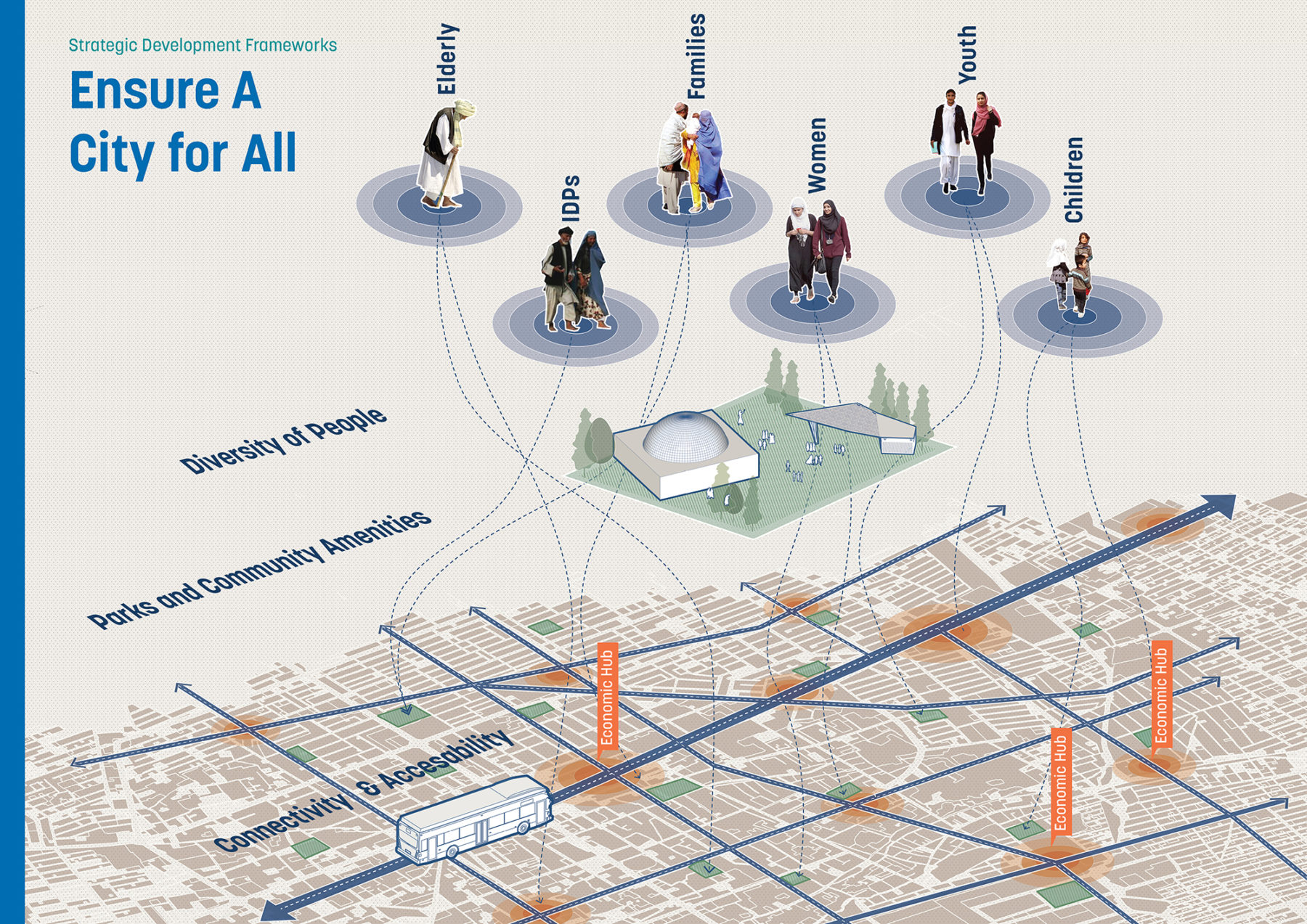
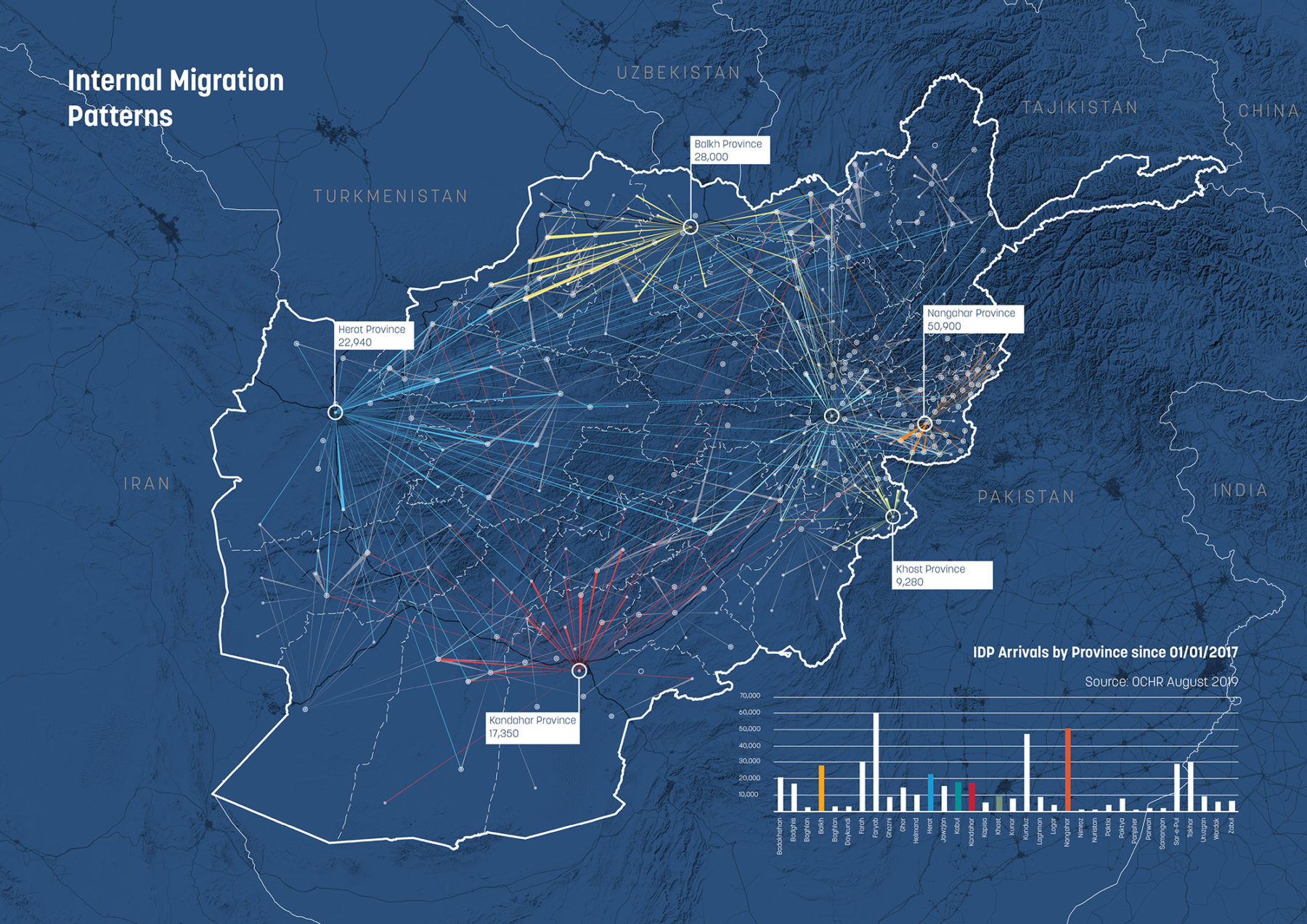
Internally Displaced People (IDP) migrate to cities, in search of security and economic opportunity, drive intense population growth in unplanned areas
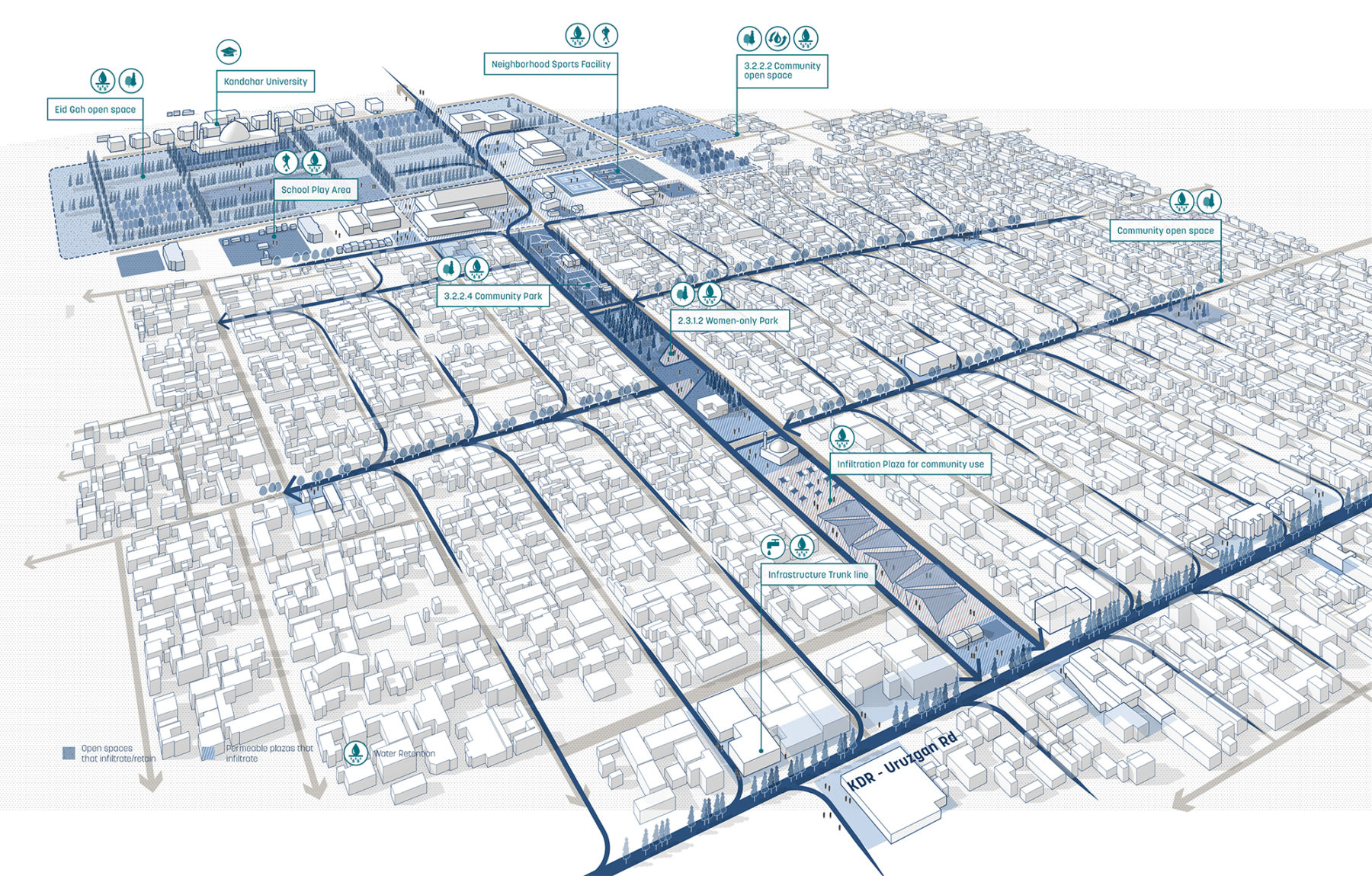
Basic infrastructure investments in unplanned areas make them more resilient to extreme flood events
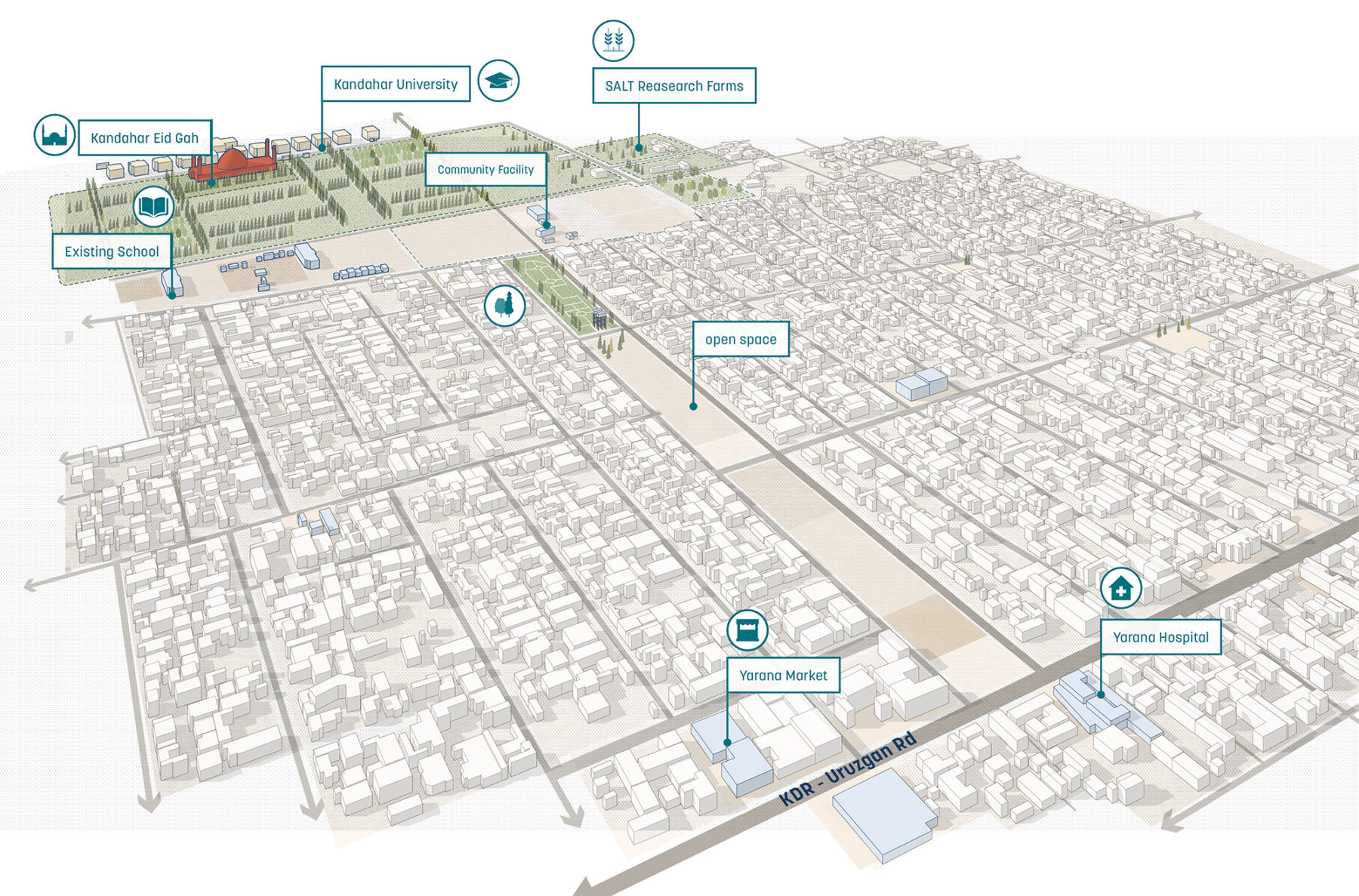
Communities, such as Eid Gah Alif in Kandahar, suffer from the lack of social infrastructure and are vulnerable to flooding
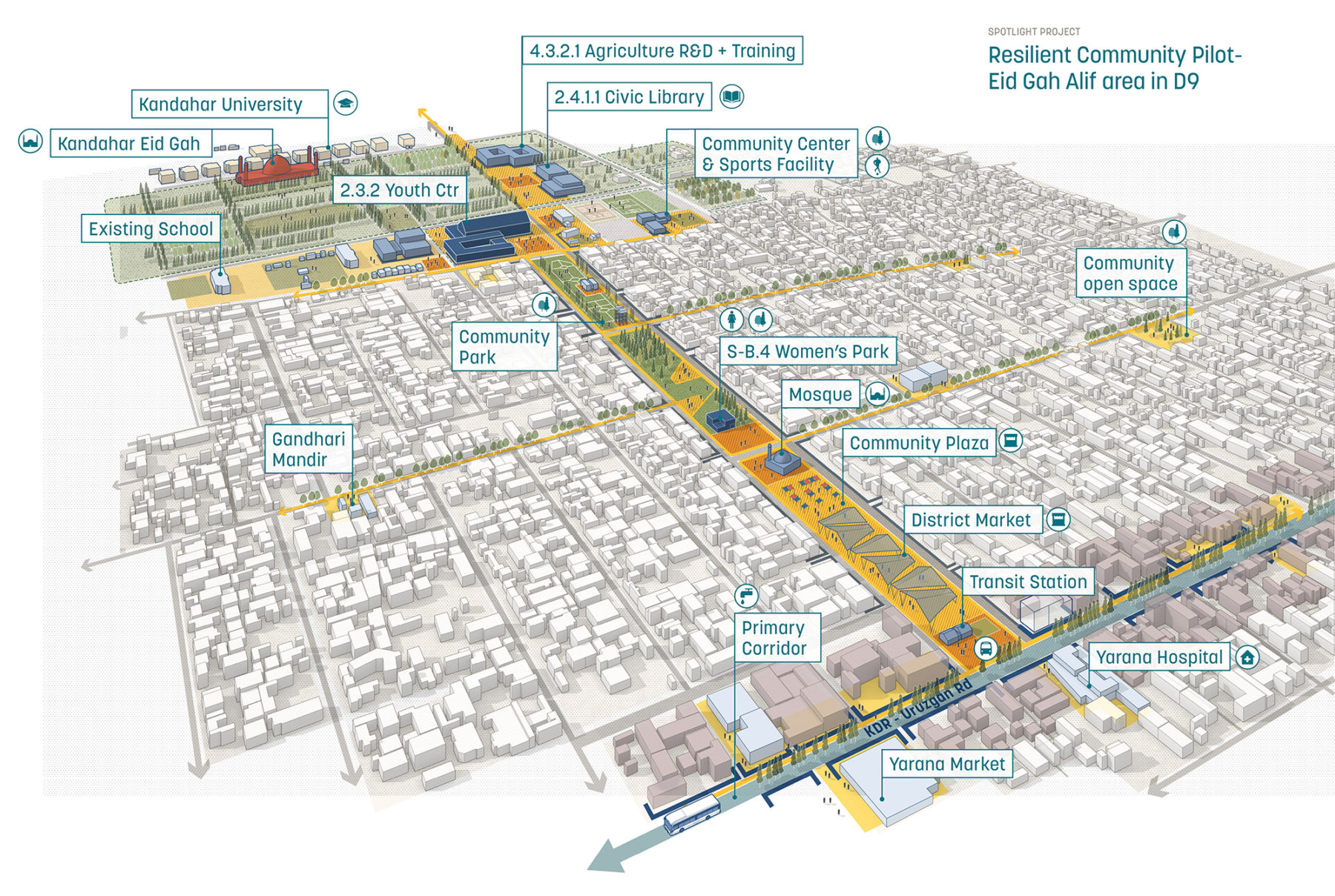
Investments in social infrastructure improve quality of life and economic opportunity for vulnerable communities
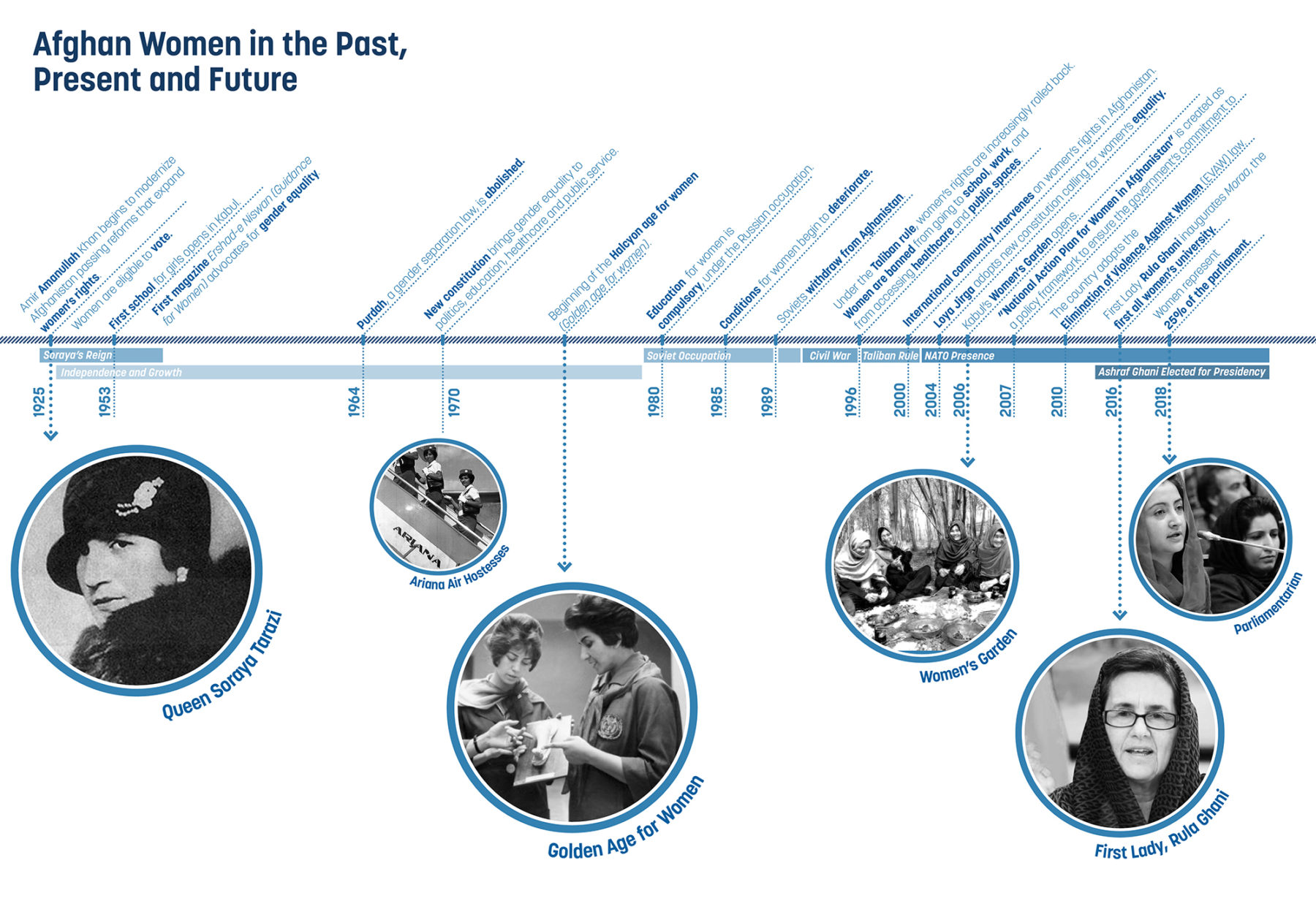
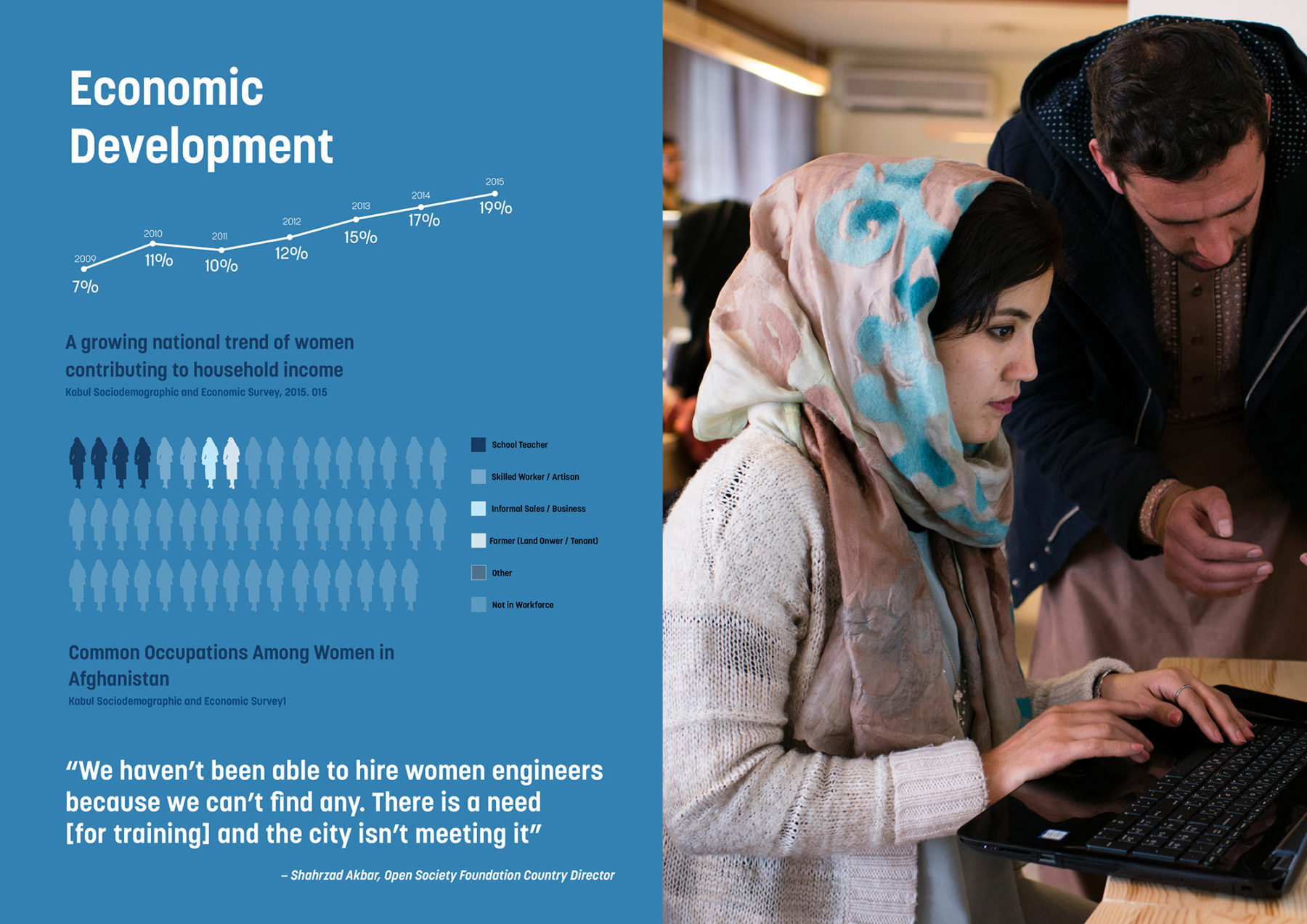
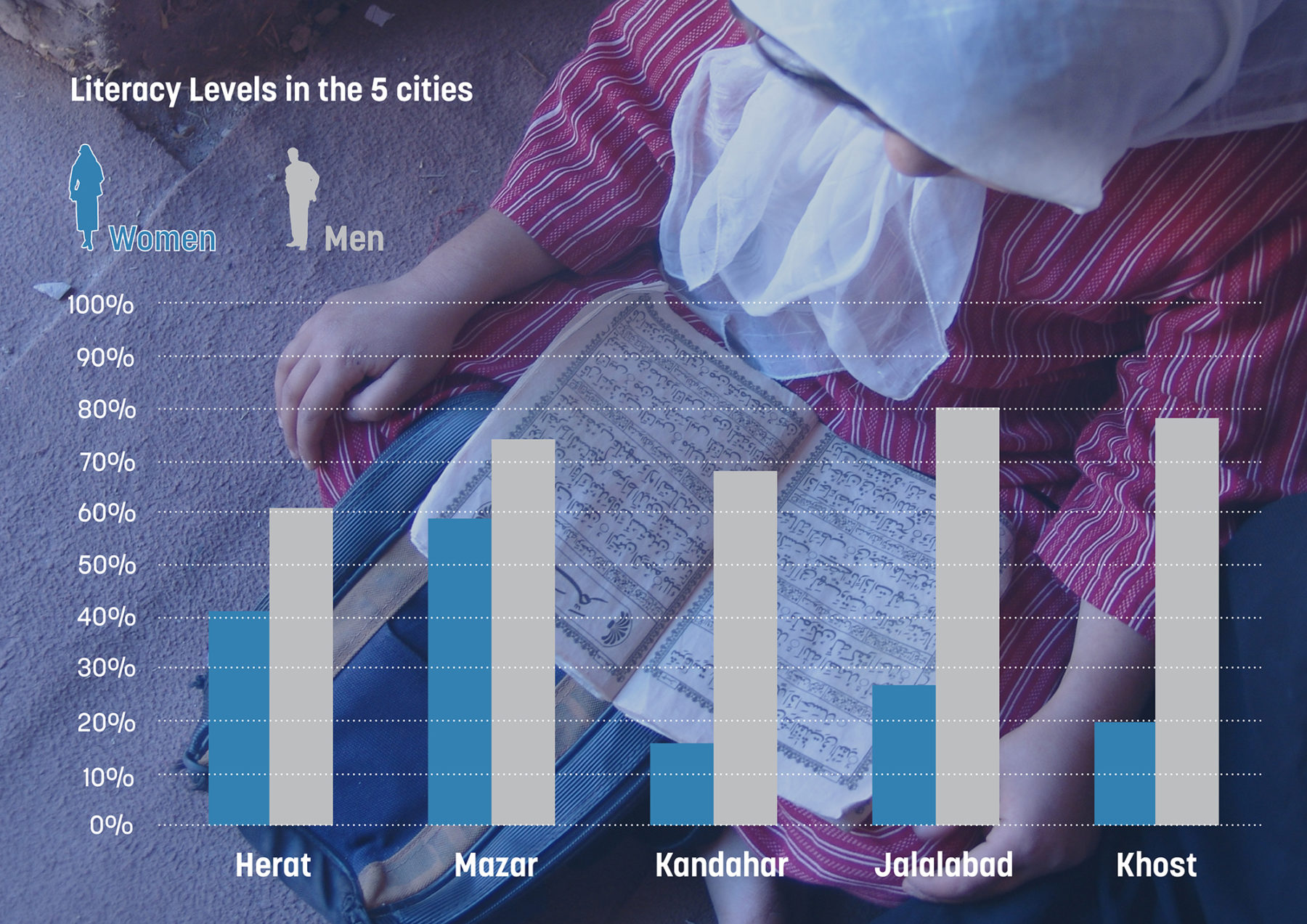
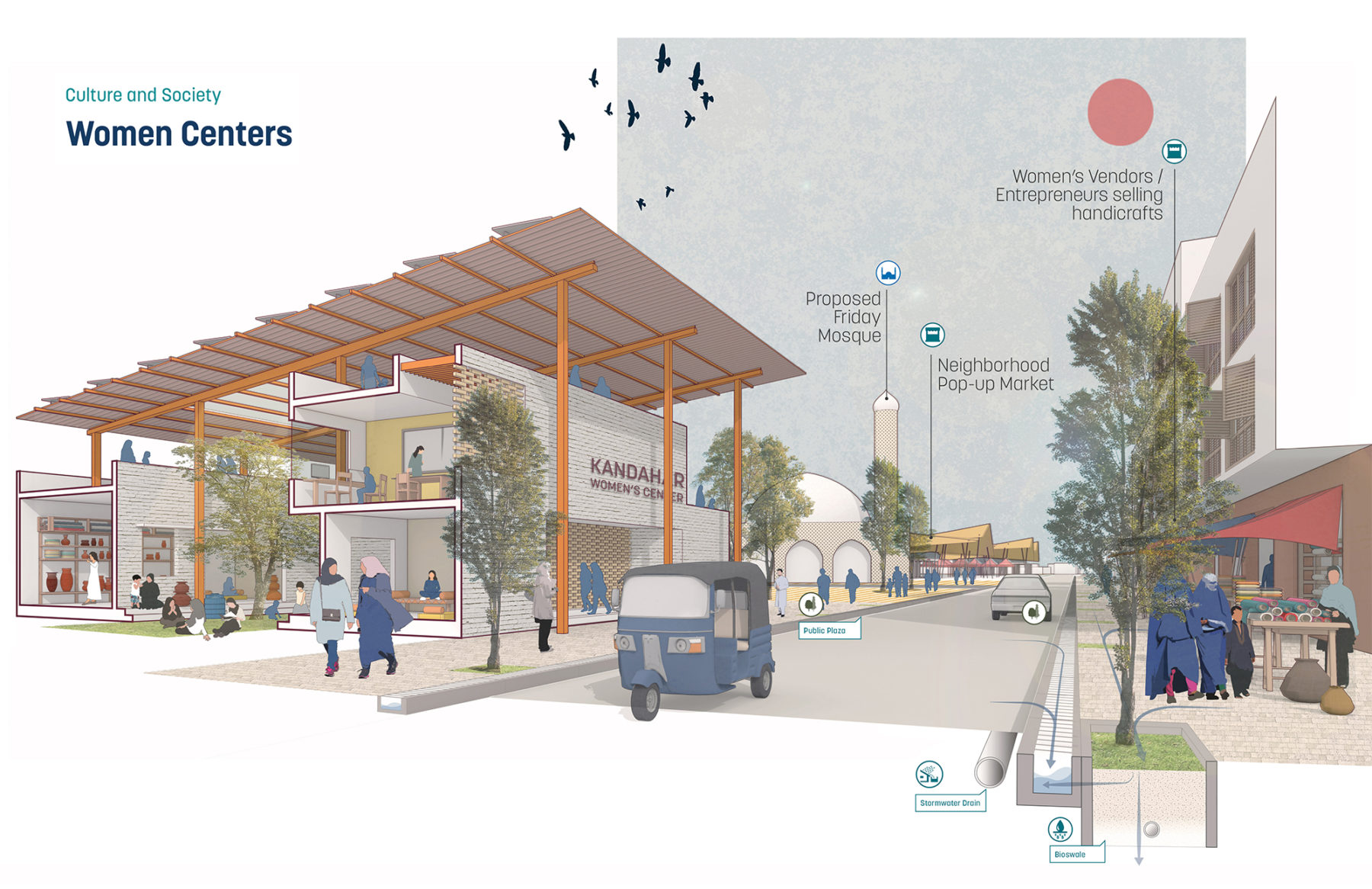
A network of Women Centers, such as the Eid Gah Alif Center in Kandahar, provides services and programs for women, leveraging their role in Afghan society
For more information contact Dennis Pieprz.